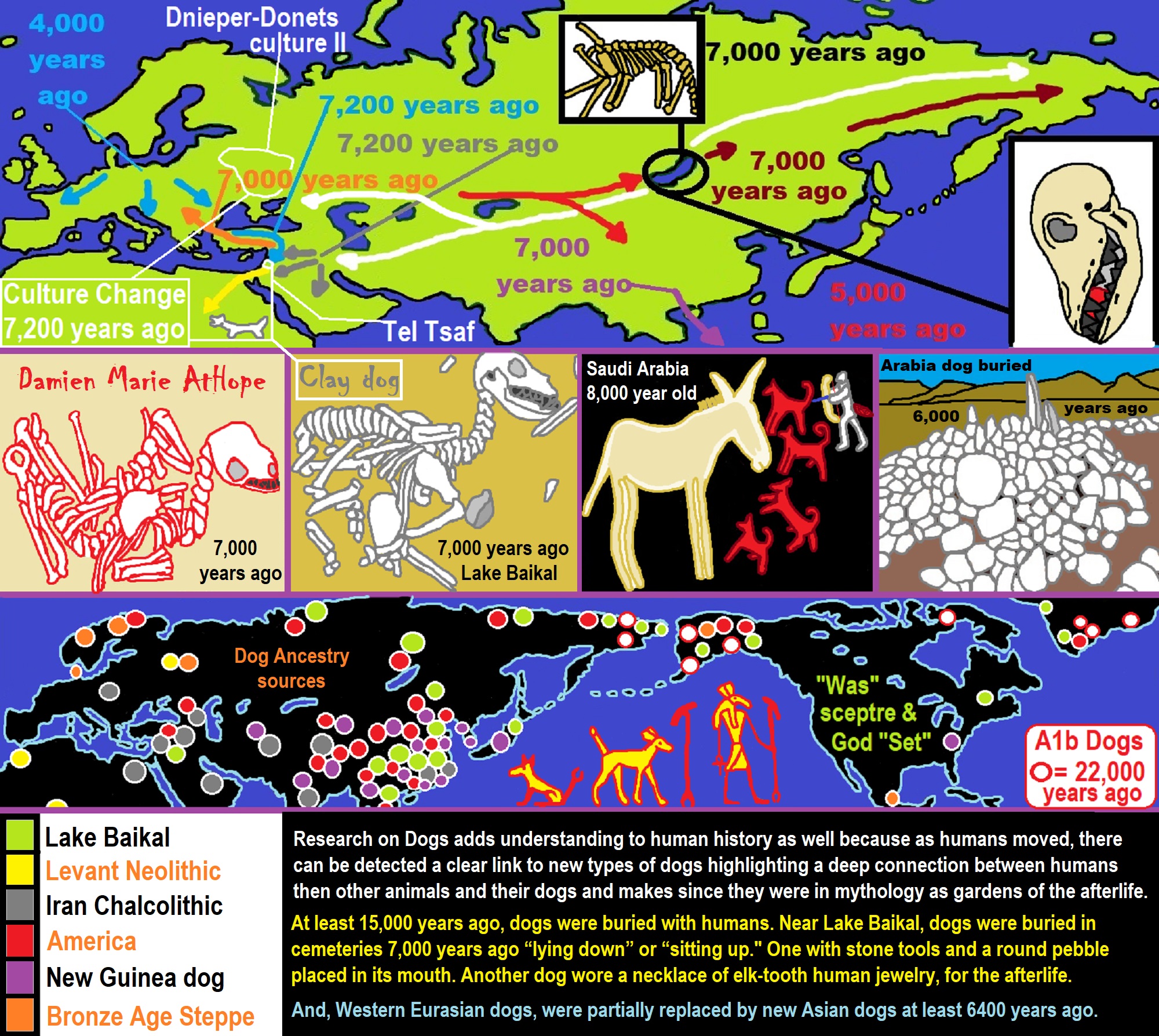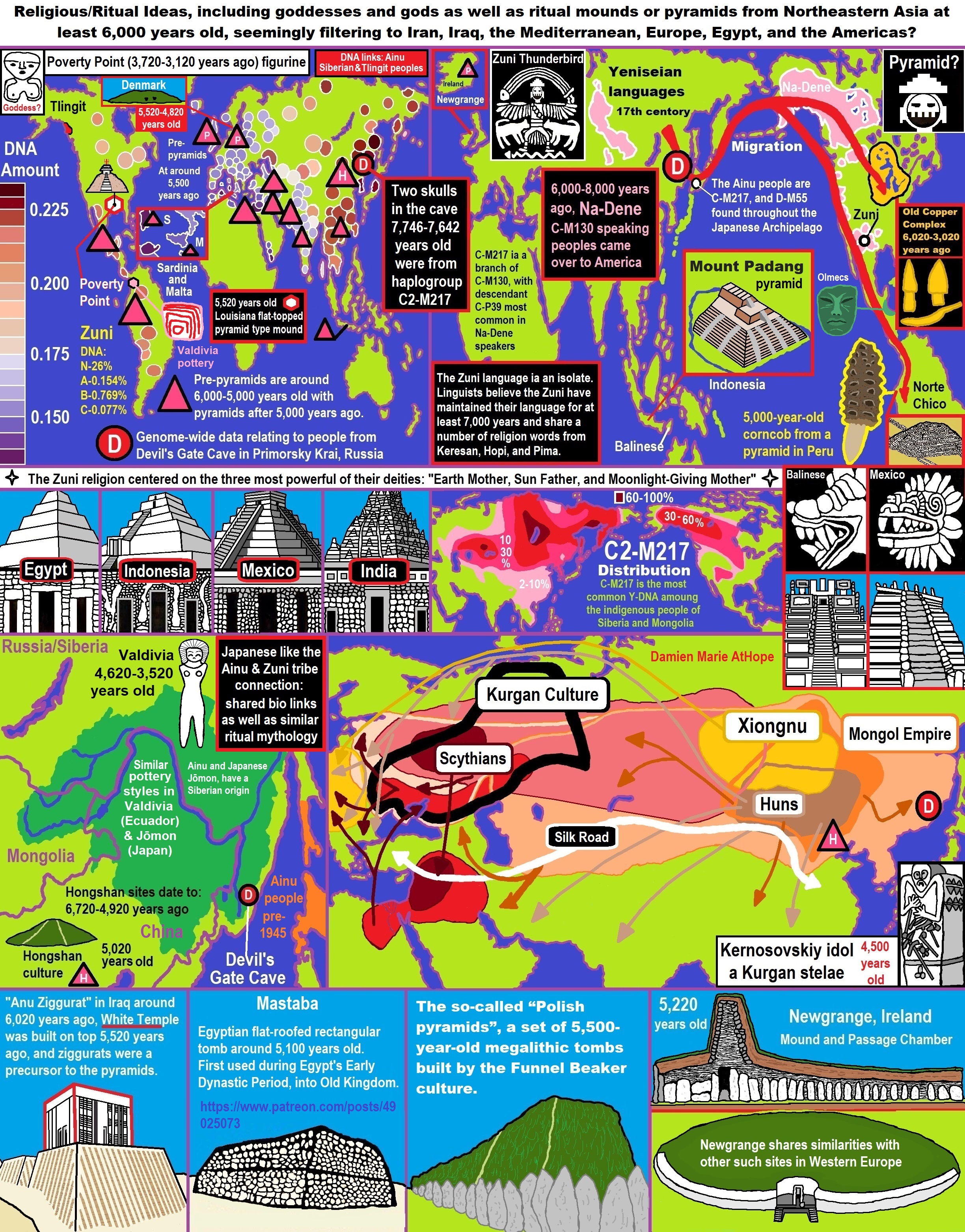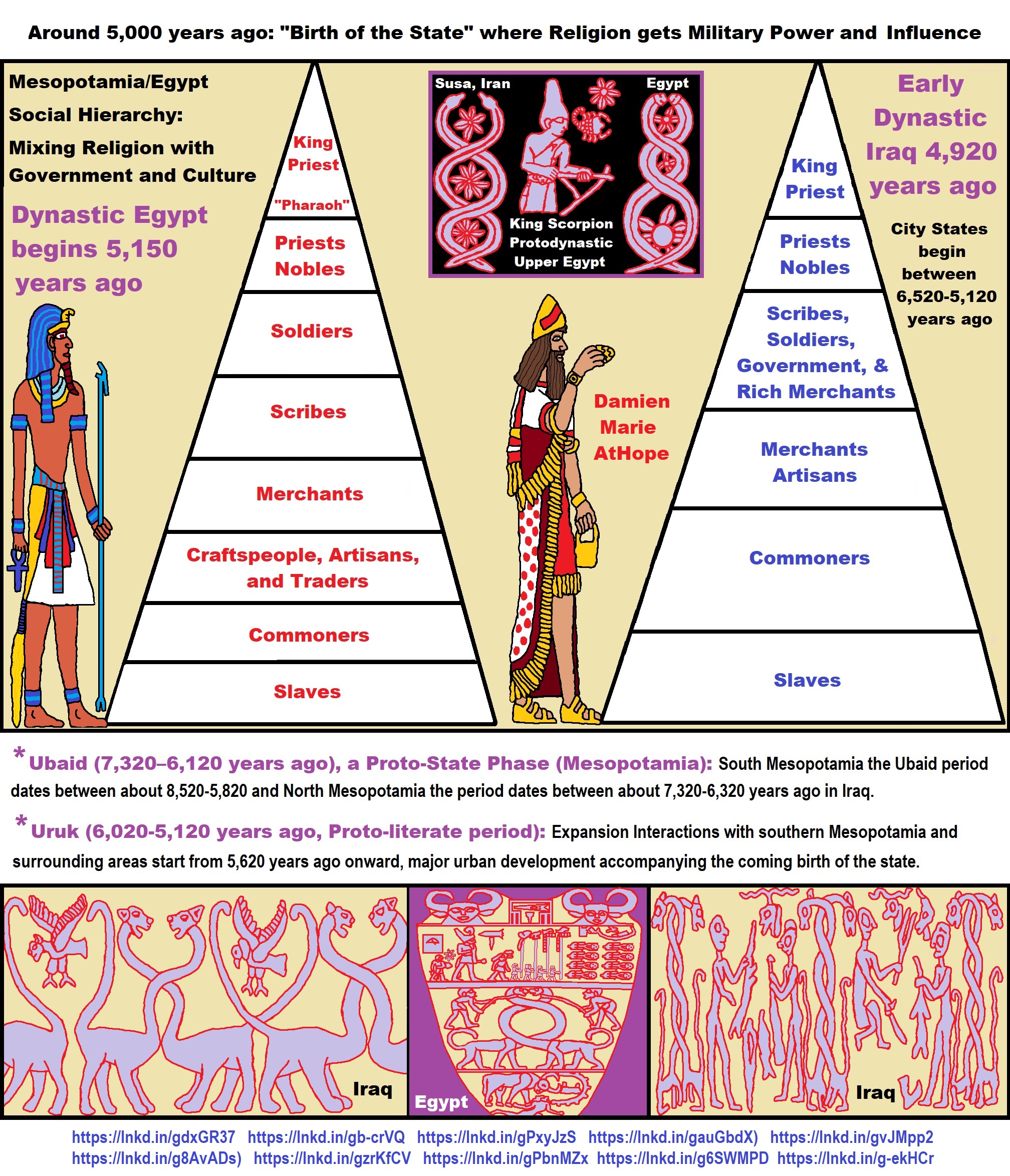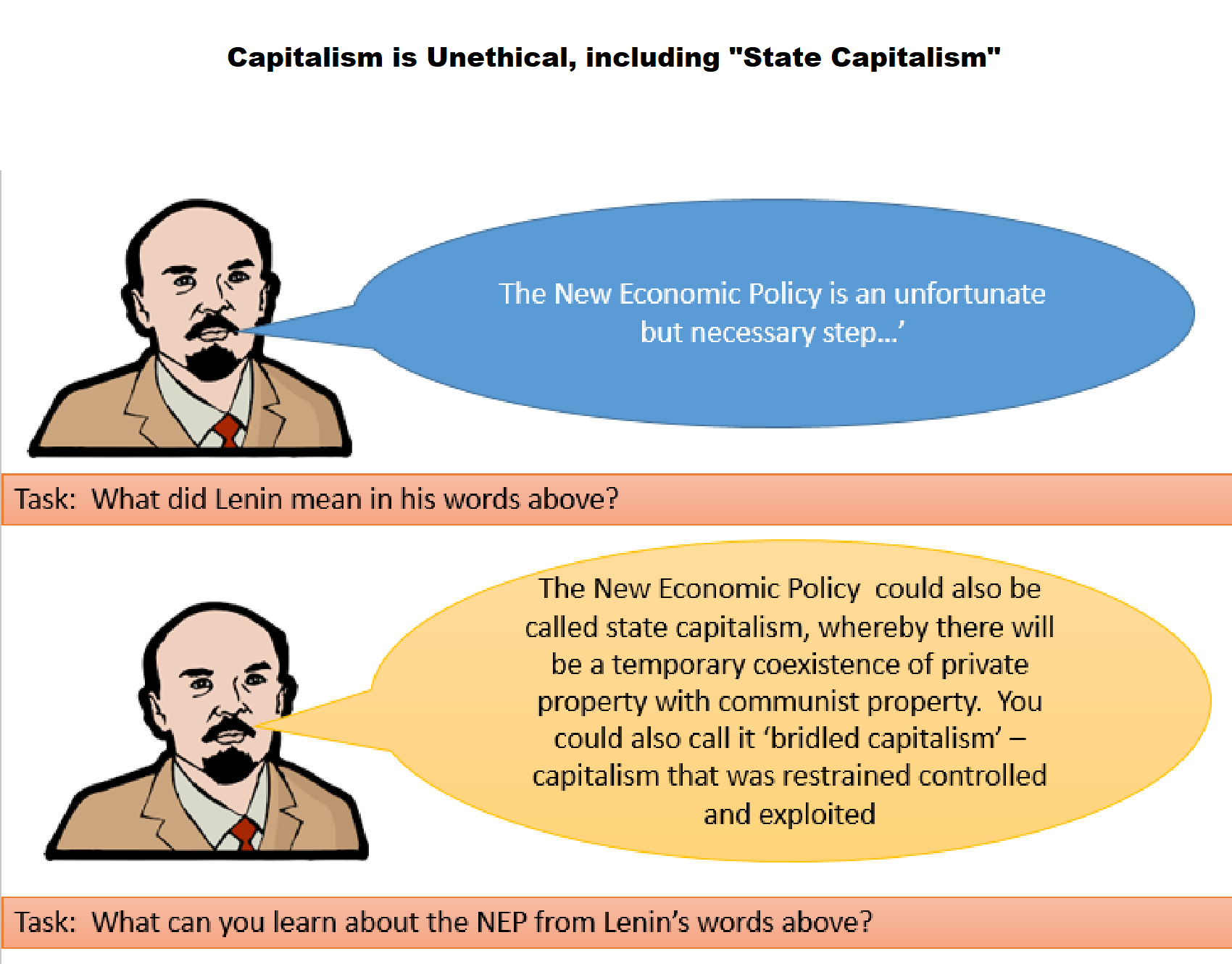
Pic ref
I don’t worship anyone, not even myself. I don’t idolize people either, not even myself. I as everyone, is a fellow dignity being. I am anti-classism and proud in our humanity equality. We rise by helping each other. I am a socialist anarchist and I welcome all good humans.
Capitalism is an unethical economic system based on profit over people.
Capitalism is commonly a very predatory economic system, generally favoring profits above people as Capitalism’s sacred held (even if hidden) belief.
State capitalism?
“State capitalism is a form of capitalism that features high concentrations of state-owned commercial enterprises or state direction of an economy based on the accumulation of capital, wage labor, and market allocation. In some cases, state capitalism refers to economic policies such as dirigisme, which existed in France during the second half of the 20th century, and to the present-day economies of the People’s Republic of China and Singapore, where the government owns controlling shares in publicly traded companies. Some authors also define the former economies of the Eastern Bloc as constituting a form of state capitalism.” ref
“Marxist literature defines state capitalism as a social system combining capitalism with ownership or control by a state. By this definition, a state capitalist country is one where the government controls the economy and essentially acts like a single huge corporation, extracting surplus value from the workforce in order to invest it in further production. This designation applies regardless of the political aims of the state, even if the state is nominally socialist. Many scholars agree that the economy of the Soviet Union and of the Eastern Bloc countries modeled after it, including Maoist China, were state capitalist systems, and some western commentators believe that the current economies of China and Singapore also constitute a form of state capitalism.” ref
“State capitalism is used by various authors in reference to a private capitalist economy controlled by a state, i.e. a private economy that is subject to economic planning and interventionism. It has also been used to describe the controlled economies of the Great Powers during World War I. Alternatively, state capitalism may refer to an economic system where the means of production are privately owned, but the state has considerable control over the allocation of credit and investment. This was the case of Western European countries during the post-war consensus and of France during the period of dirigisme after World War II. Other examples include Hungary under Viktor Orbán, Russia under Vladimir Putin, Malaysia under Mahathir Mohamad, Singapore under Lee Kuan Yew and Turkey under Recep Tayyip Erdoğan, as well as military dictatorships during the Cold War and fascist regimes such as Nazi Germany.” ref
“State capitalism has also come to be used (sometimes interchangeably with state monopoly capitalism) to describe a system where the state intervenes in the economy to protect and advance the interests of large-scale businesses. Noam Chomsky, a libertarian socialist, applies the term ‘state capitalism’ to the economy of the United States, where large enterprises that are deemed “too big to fail” receive publicly funded government bailouts that mitigate the firms’ assumption of risk and undermine market laws, and where private production is largely funded by the state at public expense, but private owners reap the profits. This practice is held in contrast with the ideals of both socialism and laissez-faire capitalism.” ref
“There are various theories and critiques of state capitalism, some of which existed before the October Revolution. The common themes among them identify that the workers do not meaningfully control the means of production and that capitalist social relations and production for profit still occur within state capitalism, fundamentally retaining the capitalist mode of production. In Socialism: Utopian and Scientific (1880), Friedrich Engels argued that state ownership does not do away with capitalism by itself, but rather would be the final stage of capitalism, consisting of ownership and management of large-scale production and communication by the bourgeois state. He argued that the tools for ending capitalism are found in state capitalism. In Imperialism, the Highest Stage of Capitalism (1916), Lenin claimed that World War I had transformed laissez-faire capitalism into the monopolist state capitalism.” ref
“In the Socialism: Utopian and Scientific (1880), Friedrich Engels described state ownership, i.e. state capitalism, as follows:
If the crisis revealed the incapacity of the bourgeoisie any longer to control the modern productive forces, the conversion of the great organizations for production and communication into joint-stock companies and state property shows that for this purpose the bourgeoisie can be dispensed with. All the social functions of the capitalists are now carried out by salaried employees. The capitalist has no longer any social activity save the pocketing of revenues, the clipping of coupons, and gambling on the stock exchange, where the different capitalists fleece each other of their capital. Just as at first the capitalist mode of production displaced the workers, so now it displaces the capitalists, relegating them to the superfluous population even if not in the first instance to the industrial reserve army.” ref
“Engels argued that the tools for ending capitalism are found in state capitalism, further writing:
But neither the conversion into joint stock companies nor into state property deprives the productive forces of their character as capital. In the case of joint-stock companies this is obvious. And the modern state, too, is only the organization with which bourgeois society provides itself in order to maintain the general external conditions of the capitalist mode of production against encroachments either by the workers or by individual capitalists. The modern state, whatever its form, is then the state of the capitalists, the ideal collective body of all the capitalists. The more productive forces it takes over as its property, the more it becomes the real collective body of the capitalists, the more citizens it exploits. The workers remain wage-earners, proletarians. The capitalist relationship isn’t abolished; it is rather pushed to the extreme. But at this extreme it is transformed into its opposite. State ownership of the productive forces is not the solution of the conflict, but it contains within itself the formal means, the key to the solution.” ref
Communism?
“Communism (from Latin communis, ‘common, universal’) is a philosophical, social, political, and economic ideology and movement whose goal is the establishment of a communist society, namely a socioeconomic order structured upon the ideas of common or social ownership of all property and the absence of social classes, money, and the state. Communism is a specific, yet distinct, form of socialism. Communists usually seek a voluntary state of self-governance, but disagree on the means to this end, reflecting a distinction between a more libertarian approach of communization, revolutionary spontaneity, and workers’ self-management, and a more vanguardist or Communist party-driven approach through the development of a constitutional socialist state followed by Marx’s withering away of the state.” ref
“Variants of communism have been developed throughout history, including anarcho-communism and Marxist schools of thought. Communism includes a variety of schools of thought which broadly include Marxism, Leninism, and libertarian communism as well as the political ideologies grouped around both, all of which share the analysis that the current order of society stems from capitalism, its economic system, and mode of production, namely that in this system there are two major social classes, the relationship between these two classes is exploitative, and that this situation can only ultimately be resolved through a social revolution. The two classes are the proletariat (the working class), who make up the majority of the population within society and must work to survive, and the bourgeoisie (the capitalist class), a small minority who derives profit from employing the working class through private ownership of the means of production. According to this analysis, revolution would put the working class in power and in turn, establish common ownership of property which is the primary element in the transformation of society towards a communist mode of production.” ref
“In the 20th century, Communist governments espousing Marxism–Leninism and its variants came into power in parts of the world, first in the Soviet Union with the Russian Revolution of 1917, and then in portions of Eastern Europe, Asia, and a few other regions after World War II. Along with social democracy, communism became the dominant political tendency within the international socialist movement by the 1920s. Criticism of communism can be divided into two broad categories, namely that which concerns itself with the practical aspects of 20th-century Communist states and that which concerns itself with communist principles and theory. Several academics and economists, among other scholars, posit that the Soviet model under which these nominally Communist states in practice operated was not an actual communist economic model in accordance with most accepted definitions of communism as an economic theory but in fact a form of state capitalism, or non-planned administrative-command system.” ref
“Communism derives from the French communisme, which developed out of the Latin roots communis and the suffix isme. Semantically, communis can be translated to “of or for the community”, while isme is a suffix that indicates the abstraction into a state, condition, action, or doctrine. Communism may be interpreted as “the state of being of or for the community”; this semantic constitution has led to numerous usages of the word in its evolution. Prior to becoming associated with its more modern conception of an economic and political organization, it was initially used in designating various social situations. Communism came to be primarily associated with Marxism, most specifically embodied in The Communist Manifesto, which proposed a particular type of communism.” ref
“One of the first uses of the word in its modern sense is in a letter sent by Victor d’Hupay to Restif de la Bretonne around 1785, in which d’Hupay describes himself as an auteur communiste (“communist author”). In 1793, Restif first used communisme to describe a social order based on egalitarianism and the common ownership of property. Restif would go on to use the term frequently in his writing and was the first to describe communism as a form of government. John Goodwyn Barmby is credited with the first use of communism in English, around 1840.” ref
Communism and socialism
“Since the 1840s, communism has usually been distinguished from socialism. The modern definition and usage of the latter would be settled by the 1860s, becoming predominant over alternative terms associationist (Fourierism), co-operative, and mutualist, which had previously been used as synonyms; instead, communism fell out of use during this period.” ref
“An early distinction between communism and socialism was that the latter aimed to only socialize production, whereas the former aimed to socialize both production and consumption (in the form of free access to final goods). By 1888, Marxists employed socialism in place of communism which had come to be considered an old-fashioned synonym for the former. It was not until 1917, with the Bolshevik Revolution, that socialism came to refer to a distinct stage between capitalism and communism, introduced by Vladimir Lenin as a means to defend the Bolshevik seizure of power against traditional Marxist criticism that Russia’s productive forces were not sufficiently developed for socialist revolution.” ref
“A distinction between communist and socialist as descriptors of political ideologies arose in 1918 after the Russian Social-Democratic Labour Party renamed itself to the All-Russian Communist Party, where Communist came to specifically refer to socialists who supported the politics and theories of Bolshevism, Leninism, and later in the 1920s those of Marxism–Leninism, although Communist parties continued to describe themselves as socialists dedicated to socialism.” ref
“Both communism and socialism eventually accorded with the cultural attitude of adherents and opponents towards religion. In European Christendom, communism was believed to be the atheist way of life. In Protestant England, communism was too phonetically similar to the Roman Catholic communion rite, hence English atheists denoted themselves socialists. Friedrich Engels stated that in 1848, at the time when The Communist Manifesto was first published, socialism was respectable on the continent, while communism was not; the Owenites in England and the Fourierists in France were considered respectable socialists, while working-class movements that “proclaimed the necessity of total social change” denoted themselves communists.” ref
“This latter branch of socialism produced the communist work of Étienne Cabet in France and Wilhelm Weitling in Germany. While liberal democrats looked to the Revolutions of 1848 as a democratic revolution which in the long run ensured liberty, equality, and fraternity, Marxists denounced 1848 as a betrayal of working-class ideals by a bourgeoisie indifferent to the legitimate demands of the proletariat.” ref
“According to The Oxford Handbook of Karl Marx, “Marx used many terms to refer to a post-capitalist society—positive humanism, socialism, Communism, realm of free individuality, free association of producers, etc. He used these terms completely interchangeably. The notion that ‘socialism’ and ‘Communism’ are distinct historical stages is alien to his work and only entered the lexicon of Marxism after his death.” ref
Associated usage and communist states
“In the United States, communism is widely used as a pejorative term, much like socialism, mainly in reference to authoritarian socialism and Communist states. The emergence of the Soviet Union as the world’s first nominally Communist state led to the term’s widespread association with Marxism–Leninism and the Soviet-type economic planning model. Marxism–Leninism is an empty term that depends on the approach and basis of ruling Communist parties, and is dynamic and open to re-definitions, being both fixed and not fixed in meaning. In his essay “Judging Nazism and Communism”, Martin Malia defines a “generic Communism” category as any Communist political party movement led by intellectuals; this umbrella term allows grouping together such different regimes as radical Soviet industrialism and the Khmer Rouge‘s anti-urbanism. The idea to group together different countries such as Afghanistan and Hungary has no adequate explanation.” ref
“While the term Communist state is used by Western historians, political scientists, and news media to refer to countries ruled by Communist parties, these states themselves did not describe themselves as communist or claim to have achieved communism: they referred to themselves as socialist states that are in the process of constructing communism. Terms used by Communist states include national-democratic, people’s democratic, socialist-oriented, and workers and peasants’ states.” ref
“Engels described state capitalism as a new form or variant of capitalism. In 1896, following Engels, the German Social Democrat Wilhelm Liebknecht said: “Nobody has combated State Socialism more than we German Socialists; nobody has shown more distinctively than I that State Socialism is really State capitalism.” ref
“It has been suggested that the concept of state capitalism can be traced back to Mikhail Bakunin‘s critique during the First International of the potential for state exploitation under Marxist-inspired socialism, or to Jan Waclav Machajski‘s argument in The Intellectual Worker (1905) that socialism was a movement of the intelligentsia as a class, resulting in a new type of society he termed state capitalism. For anarchists, state socialism is equivalent to state capitalism, hence oppressive and merely a shift from private capitalists to the state being the sole employer and capitalist.” ref
“In Imperialism, the Highest Stage of Capitalism and Imperialism and World Economy, both Vladimir Lenin and Nikolai Bukharin, respectively, had similarly identified the growth of state capitalism as one of the main features of capitalism in its imperialist epoch. In The State and Revolution, Lenin wrote that “the erroneous bourgeois reformist assertion that monopoly capitalism or state-monopoly capitalism is no longer capitalism, but can now be called “state socialism” and so on, is very common.” ref
“During World War I, using Lenin’s idea that tsarism was taking a Prussian path to capitalism, the Bolshevik Nikolai Bukharin identified a new stage in the development of capitalism in which all sectors of national production and all important social institutions had become managed by the state—he termed this new stage state capitalism. After the October Revolution, Lenin used the term state capitalism positively. In spring 1918, during a brief period of economic liberalism prior to the introduction of war communism and again during the New Economic Policy (NEP) of 1921, Lenin justified the introduction of state capitalism controlled politically by the dictatorship of the proletariat to further central control and develop the productive forces, making the following point:
Reality tells us that state capitalism would be a step forward. If in a small space of time we could achieve state capitalism, that would be a victory.” ref
“Lenin argued the state should temporarily run the economy which would eventually be taken over by workers. To Lenin, state capitalism did not mean the state would run most of the economy, but that state capitalism would be one of five elements of the economy:
State capitalism would be a step forward as compared with the present state of affairs in our Soviet Republic. If in approximately six months’ time state capitalism became established in our Republic, this would be a great success and a sure guarantee that within a year socialism will have gained a permanently firm hold.” ref
As a term and concept, state capitalism has been used by various socialists, including anarchists, Marxists, Leninists, left communists, Marxist–Leninists, and Trotskyists.
“Perhaps the earliest critique of the Soviet Union as state capitalist was formulated by the Russian anarchists as documented in Paul Avrich‘s work on Russian anarchism.” ref
“The Russian anarchists’ claim would become standard in anarchist works. Of the Soviet Union, the prominent anarchist Emma Goldman wrote an article from 1935 titled “There Is No Communism in Russia” in which she argued:
Such a condition of affairs may be called state capitalism, but it would be fantastic to consider it in any sense Communistic […] Soviet Russia, it must now be obvious, is an absolute despotism politically and the crassest form of state capitalism economically.” ref
“When speaking about Marxism, Murray Bookchin said the following:
Marxism, in fact, becomes ideology. It is assimilated by the most advanced forms of state capitalist movement — notably Russia. By an incredible irony of history, Marxian ‘socialism’ turns out to be in large part the very state capitalism that Marx failed to anticipate in the dialectic of capitalism. The proletariat, instead of developing into a revolutionary class within the womb of capitalism, turns out to be an organ within the body of bourgeois society […] Lenin sensed this and described ‘socialism’ as ‘nothing but state capitalist monopoly made to benefit the whole people’. This is an extraordinary statement if one thinks out its implications, and a mouthful of contradictions.” ref
“While speaking about Leninism, the authors of An Anarchist FAQ say:
Rather than present an effective and efficient means of achieving revolution, the Leninist model is elitist, hierarchical and highly inefficient in achieving a socialist society. At best, these parties play a harmful role in the class struggle by alienating activists and militants with their organisational principles and manipulative tactics within popular structures and groups. At worst, these parties can seize power and create a new form of class society (a state capitalist one) in which the working class is oppressed by new bosses (namely, the party hierarchy and its appointees).” ref
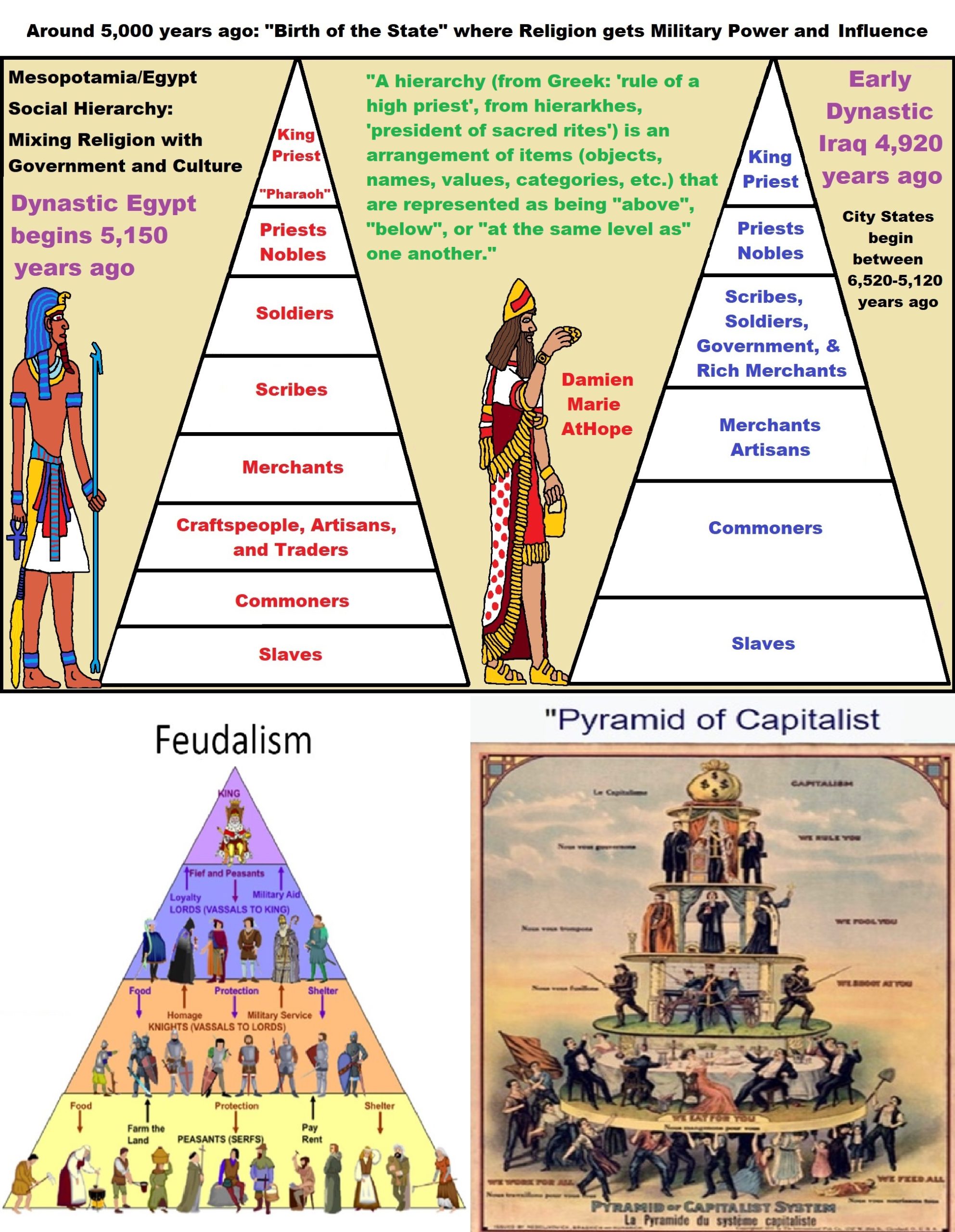
“A hierarchy (from Greek: ‘rule of a high priest’, from hierarkhes, ‘president of sacred rites’) is an arrangement of items (objects, names, values, categories, etc.) that are represented as being “above”, “below”, or “at the same level as” one another.” ref
“The Pyramid of Capitalist System is a common name of a 1911 American cartoon caricature critical of capitalism, copied from a Russian flyer of c. 1901. The graphic focus is on stratification by social class and economic inequality. The work has been described as “famous”, “well-known and widely reproduced”. A number of derivative works exist. The picture shows a literal “social pyramid” or hierarchy, with the wealthy few on the top, and the impoverished masses at the bottom. Crowned with a money bag representing capitalism, the top layer, “we rule you”, is occupied by the royalty and state leaders. Underneath them are the clergy (“we fool you”), followed by the military (“we shoot at you”), and the bourgeoisie (“we eat for you”). The bottom of the pyramid is held up by the workers and the peasants (“we work for all… we feed all”). The basic message of the image is a critique of the capitalist system, depicting a hierarchy of power and wealth. It illustrates a working class supporting all others, and if it would withdraw their support from the system it could topple the existing social order. This type of criticism of capitalism is attributed to the French socialist Louis Blanc.” ref
Arcane = complicated and therefore understood or known by only a few people
To me, societies start with primitive anarchism and socialism at least 100,000 years ago and are seen in animist-only thinking that is now largely limited to southern Africa today. Then they lose systematic anarchism possibly by 50,000 to 40,000 years ago but keeps socialism/primitive communism with the emergence of totemism largely limited to Europe and then spreading out from there. And to me, arcane/primitive capitalism emerges at or around 7,000 to 5,000 years ago in central Europe especially southern Germany or surrounding areas (Czecho-Slovakia and Austria), and then spread out from there.
7,522-6,522 years ago Linear Pottery culture which I think relates to Arcane Capitalism’s origins
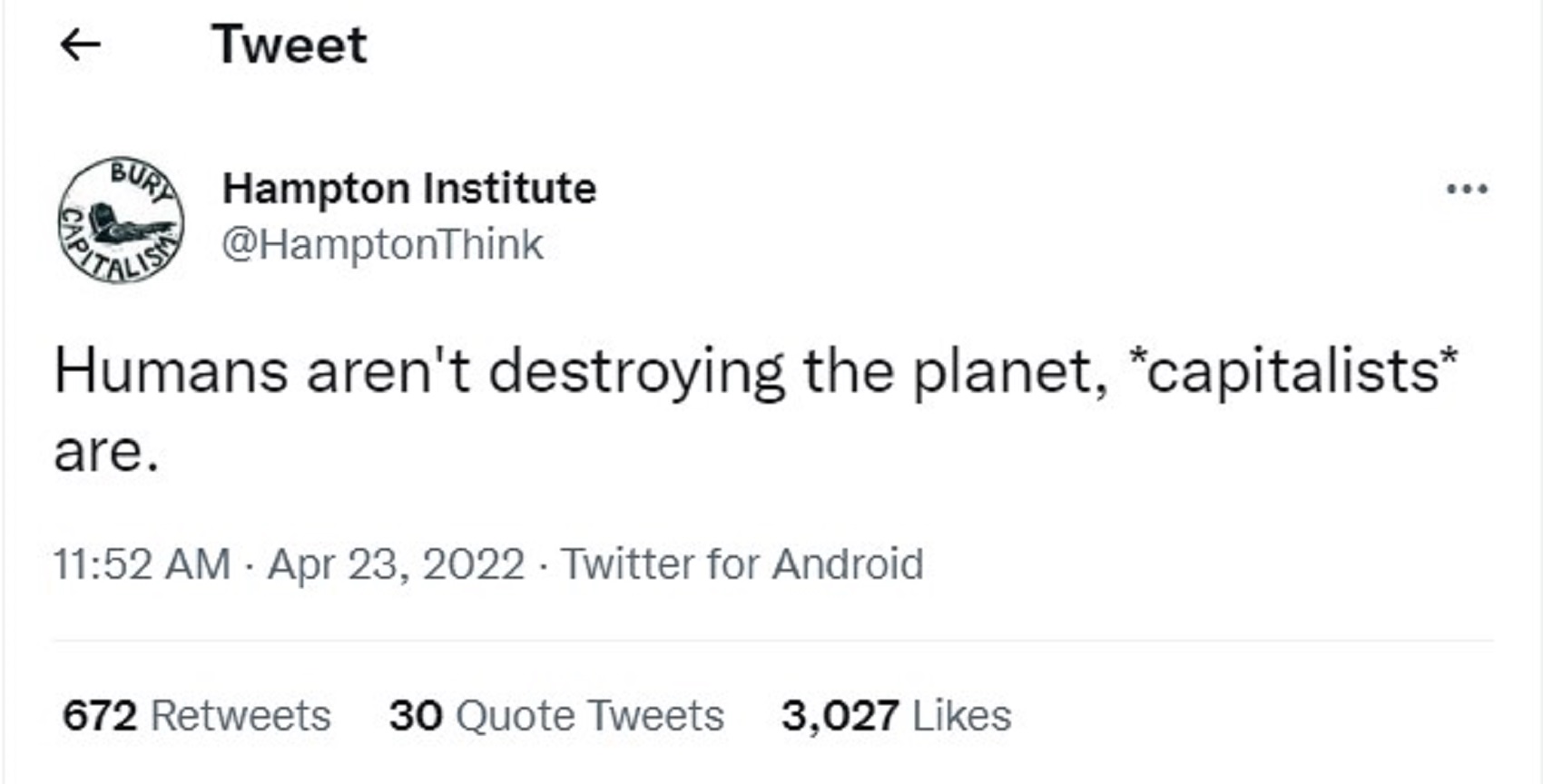
Hampton Institute @HamptonThink
A proletarian think tank founded in 2013. Commentary, analysis & theory on social, political & economic issues from a working-class perspective. hamptonthink.org

J. W. Traphagan @john_traphagan
#Anthropologist, #Author, Professor at the University of Texas at Austin. #Progressive. New Books Network Podcaster #crimefiction #japan #buddhism #sigmaxi– johntraphagan.com
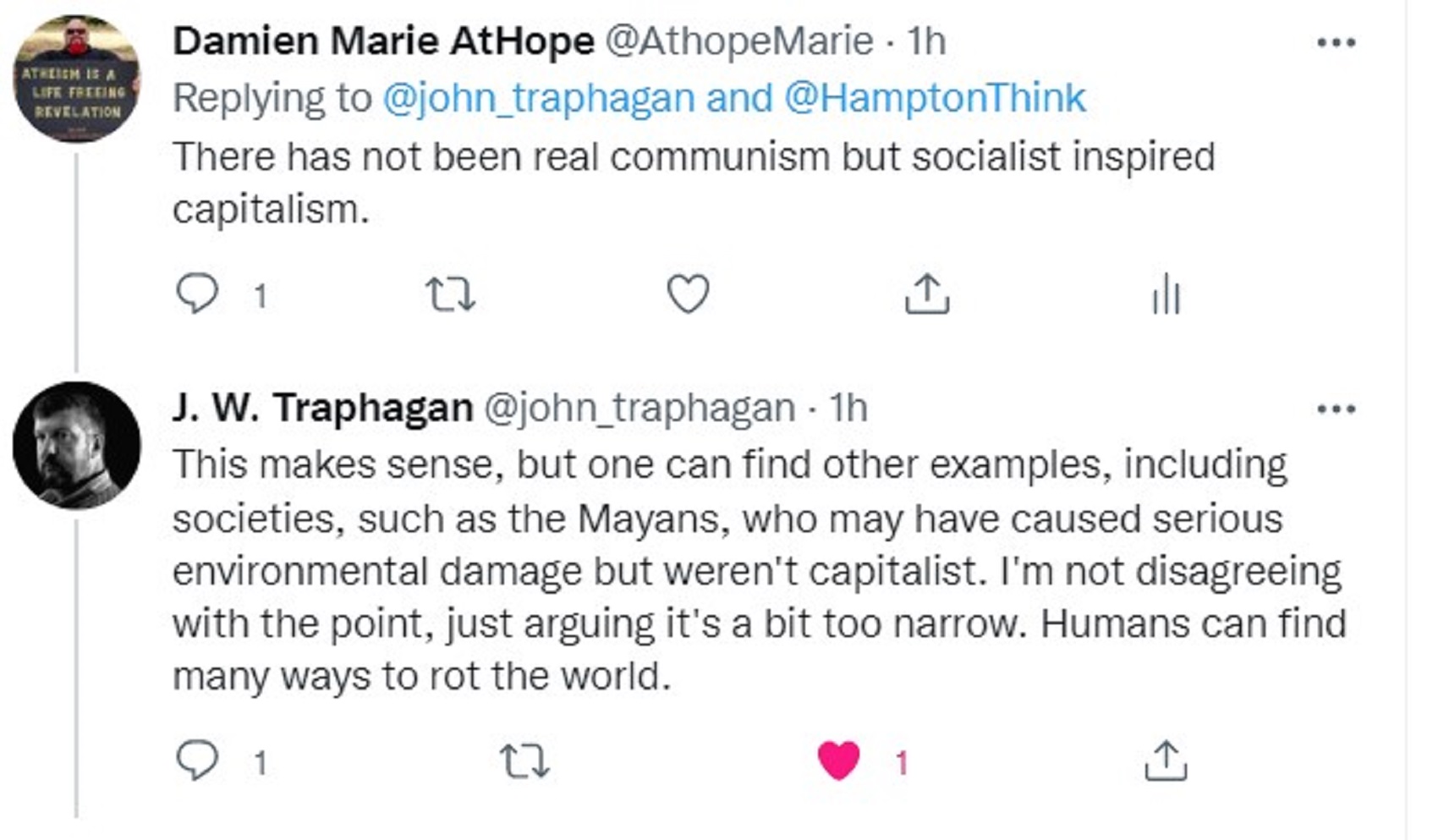

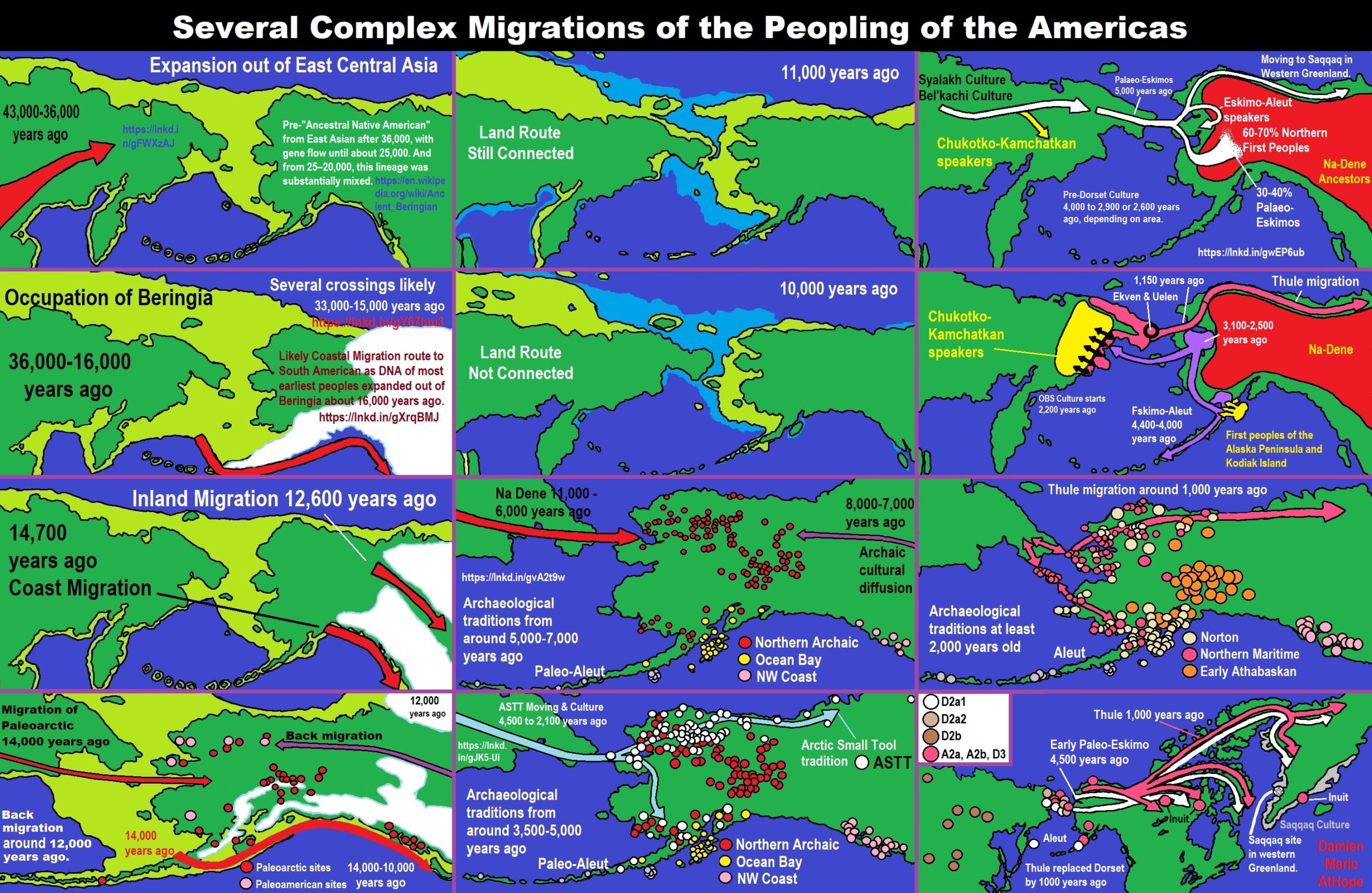

Why are these 32 symbols found in caves all over Europe
32 Sacred Cave Art Pre-Writing Shapes Dated to 35,000 to 13,000 Years Ago
- 1. Aviform: less than 10% of sites, 30,000 to 13,000 years ago.
- 2. Cruciform: 13% of sites, all time periods.
- 3. Half Circle: 18% of sites, all time periods.
- 4. Penniform: 25% of sites, starting 25,000 years ago.
- 5. Serpentiform: 7% of sites, starting 30,000 to 13,000 years ago.
- 6. Circle: 20% of sites, all time periods.
- 7. Cupule: 15% of sites, all time periods.
- 8. Line: 70% of sites, all time periods.
- 9. Dot: 42% of sites, all time periods.
- 10. Negative Hand: 15% of sites, 30,000 to 13,000 years ago.
- 11. Positive Hand: 7% of sites, 30,000 to 13,000 years ago.
- 12. Claviform: 15% of sites, all time periods.
- 13. Spiral: 2 sites, 25,000 to 15,000 years ago.
- 14. Open-Angle: 42% of sites, all time periods.
- 15. Quadrangle: 20% of sites, all time periods.
- 16. Tectiform: 10% of sites, 25,000 to 13,000 years ago.
- 17. Cordiform: 3 sites, 30,000 to 15,000 years ago.
- 18. Finger Fluting: 15% of sites, all time periods.
- 19. Oval: 30% of sites, all time periods.
- 20. Reniform: rare, 35,000 to 13,000 years ago.
- 21. Triangle: 20% of sites, all time periods.
- 22. Crosshatch: 17% of sites, all time periods.
- 23. Flabelliform: 18% of sites, all time periods.
- 24. Pectiform: 5% of sites, starting 25,000 years ago.
- 25. Scalariform: 3 sites, starting 25,000 years ago.
- 26. Zig-Zag: 7 sites, 20,000 to 13,000 years ago.
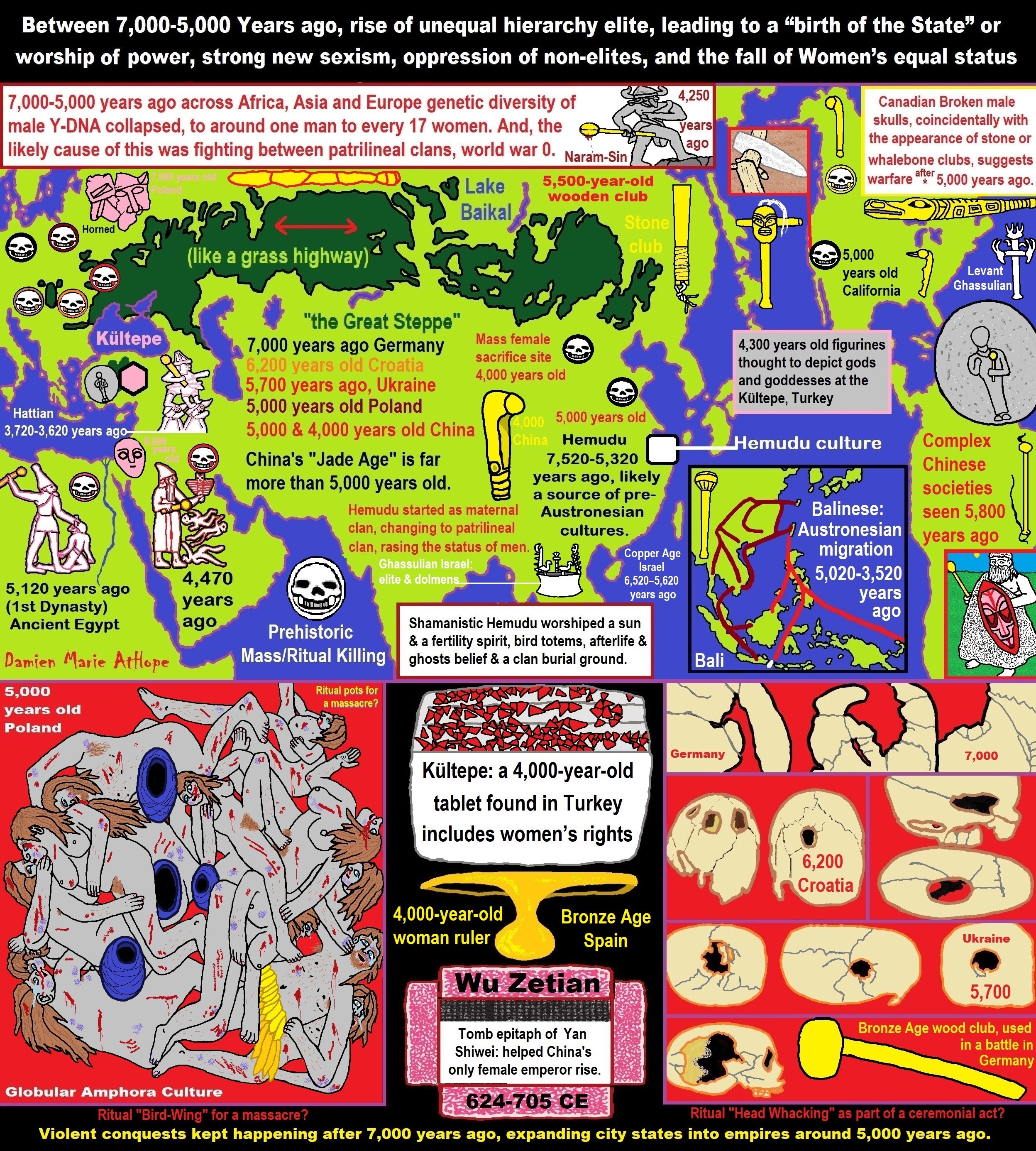
ref, ref, ref, ref, ref, ref, ref, ref, ref, ref, ref, ref, ref, ref, ref, ref, ref, ref, ref, ref, ref, ref, ref, ref, ref, ref, ref, ref, ref, ref, ref, ref, ref, ref, ref, ref, ref, ref, ref, ref, ref, ref, ref, ref, ref, ref, ref, ref, ref, ref, ref, ref, ref, ref, ref, ref, ref, ref, ref, ref, ref, ref, ref, ref, ref, ref, ref, ref, ref, ref, ref, ref, ref, ref, ref, ref, ref, ref, ref, ref, ref, ref, ref, ref, ref, ref, ref, ref, ref, ref
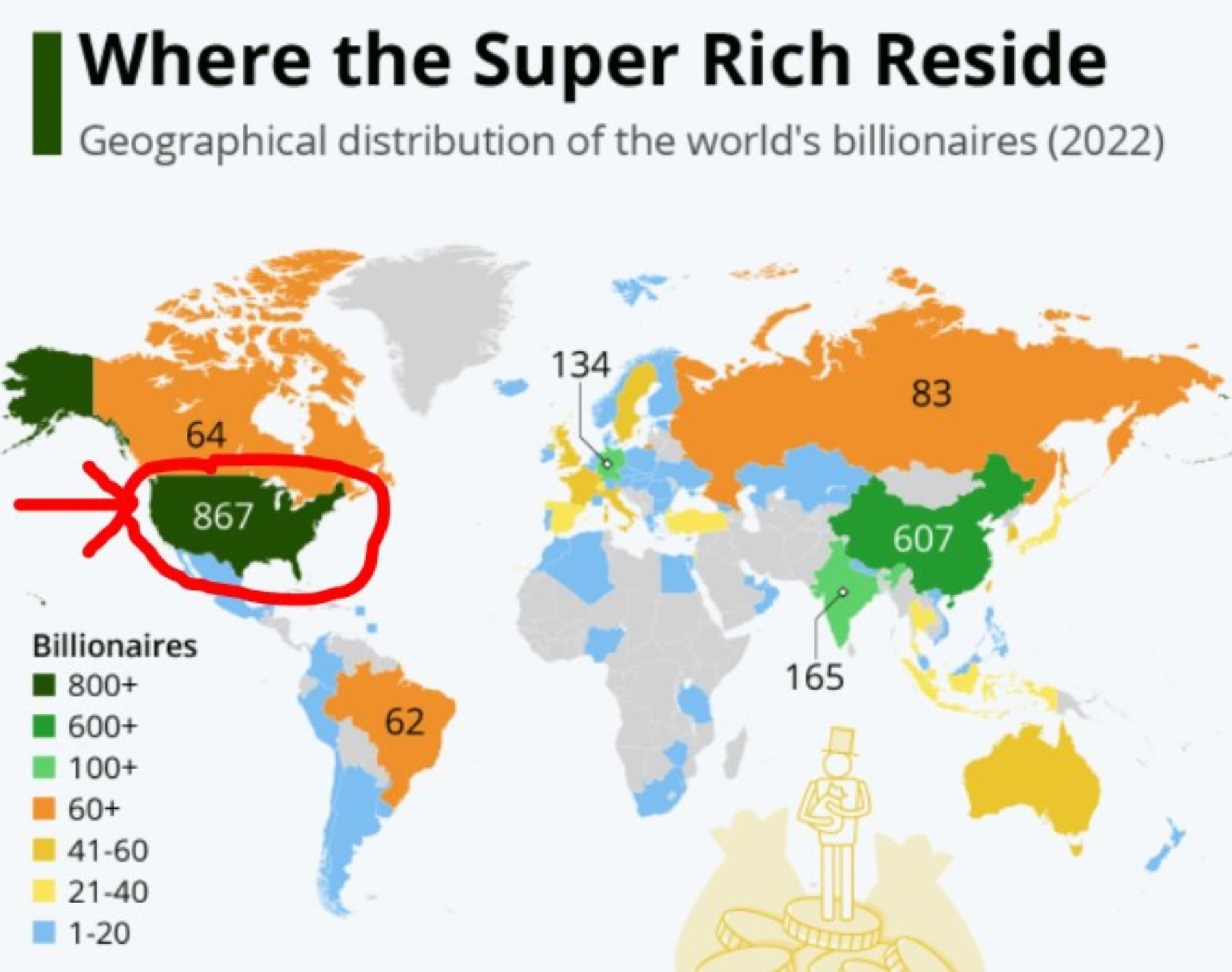

While hallucinogens are associated with shamanism, it is alcohol that is associated with paganism.
The Atheist-Humanist-Leftist Revolutionaries Shows in the prehistory series:
Show two: Pre-animism 300,000 years old and animism 100,000 years old: related to “Anarchism and Socialism”
Show tree: Totemism 50,000 years old: related to “Anarchism and Socialism”
Show four: Shamanism 30,000 years old: related to “Anarchism and Socialism”
Show five: Paganism 12,000 years old: related to “Anarchism and Socialism”
Show six: Emergence of hierarchy, sexism, slavery, and the new male god dominance: Paganism 7,000-5,000 years old: related to “Anarchism and Socialism” (Capitalism) (World War 0) Elite and their slaves!
Prehistory: related to “Anarchism and Socialism” the division of labor, power, rights, and recourses: VIDEO
Pre-animism 300,000 years old and animism 100,000 years old: related to “Anarchism and Socialism”: VIDEO
Totemism 50,000 years old: related to “Anarchism and Socialism”: VIDEO
Shamanism 30,000 years old: related to “Anarchism and Socialism”: VIDEO
Paganism 12,000 years old: related to “Anarchism and Socialism” (Pre-Capitalism): VIDEO
Paganism 7,000-5,000 years old: related to “Anarchism and Socialism” (Capitalism) (World War 0) Elite and their slaves: VIEDO
Paganism 5,000 years old: progressed organized religion and the state: related to “Anarchism and Socialism” (Kings and the Rise of the State): VIEDO
Paganism 4,000 years old: related to “Anarchism and Socialism” (First Moralistic gods, then the Origin time of Monotheism): VIEDO
I do not hate simply because I challenge and expose myths or lies any more than others being thought of as loving simply because of the protection and hiding from challenge their favored myths or lies.
The truth is best championed in the sunlight of challenge.
An archaeologist once said to me “Damien religion and culture are very different”
My response, So are you saying that was always that way, such as would you say Native Americans’ cultures are separate from their religions? And do you think it always was the way you believe?
I had said that religion was a cultural product. That is still how I see it and there are other archaeologists that think close to me as well. Gods too are the myths of cultures that did not understand science or the world around them, seeing magic/supernatural everywhere.
I personally think there is a goddess and not enough evidence to support a male god at Çatalhöyük but if there was both a male and female god and goddess then I know the kind of gods they were like Proto-Indo-European mythology.
*Next is our series idea that was addressed in, Anarchist Teaching as Free Public Education or Free Education in the Public: VIDEO
Our 12 video series: Organized Oppression: Mesopotamian State Force and the Politics of power (9,000-4,000 years ago), is adapted from: The Complete and Concise History of the Sumerians and Early Bronze Age Mesopotamia (7000-2000 BC): https://www.youtube.com/watch?v=szFjxmY7jQA by “History with Cy“
Show #1: Mesopotamian State Force and the Politics of Power (Samarra, Halaf, Ubaid)
Show #2: Mesopotamian State Force and the Politics of Power (Eridu “Tell Abu Shahrain”)
Show #3: Mesopotamian State Force and the Politics of Power (Uruk and the First Cities)
Show #4: Mesopotamian State Force and the Politics of Power (First Kings)
Show #5: Mesopotamian State Force and the Politics of Power (Early Dynastic Period)
Show #6: Mesopotamian State Force and the Politics of Power (King/Ruler Lugalzagesi)
Show #7: Mesopotamian State Force and the Politics of Power (Sargon and Akkadian Rule)
Show #9: Mesopotamian State Force and the Politics of Power (Gudea of Lagash and Utu-hegal)
Show #12: Mesopotamian State Force and the Politics of Power (Aftermath and Legacy of Sumer)

The “Atheist-Humanist-Leftist Revolutionaries”
Cory Johnston ☭ Ⓐ Atheist Leftist @Skepticallefty & I (Damien Marie AtHope) @AthopeMarie (my YouTube & related blog) are working jointly in atheist, antitheist, antireligionist, antifascist, anarchist, socialist, and humanist endeavors in our videos together, generally, every other Saturday.
Why Does Power Bring Responsibility?
Think, how often is it the powerless that start wars, oppress others, or commit genocide? So, I guess the question is to us all, to ask, how can power not carry responsibility in a humanity concept? I know I see the deep ethical responsibility that if there is power their must be a humanistic responsibility of ethical and empathic stewardship of that power. Will I be brave enough to be kind? Will I possess enough courage to be compassionate? Will my valor reached its height of empathy? I as everyone earns our justified respect by our actions, that are good, ethical, just, protecting, and kind. Do I have enough self-respect to put my love for humanity’s flushing, over being brought down by some of its bad actors? May we all be the ones doing good actions in the world, to help human flourishing.
I create the world I want to live in, striving for flourishing. Which is not a place but a positive potential involvement and promotion; a life of humanist goal precision. To master oneself, also means mastering positive prosocial behaviors needed for human flourishing. I may have lost a god myth as an atheist but I am happy to tell you my friend, it is exactly because of that, leaving the mental terrorizer, god belief that I truly regained my connected ethical as well as kind humanity.
Cory and I will talk about prehistory and theism, addressing the relevance to atheism, anarchism, and socialism.
At the same time of the rise of the male god 7,000 years ago was also the very time there was the rise of violence war, and clans to kingdoms, then empires, then states. It is all connected back to 7,000 years ago and it mover across the world.
Cory Johnston: https://damienmarieathope.com/2021/04/cory-johnston-mind-of-a-skeptical-leftist/?v=32aec8db952d
The Mind of a Skeptical Leftist (YouTube)
Cory Johnston: Mind of a Skeptical Leftist @Skepticallefty
The Mind of a Skeptical Leftist By Cory Johnston: “Promoting critical thinking, social justice, and left-wing politics by covering current events and talking to a variety of people. Cory Johnston has been thoughtfully talking to people and attempting to promote critical thinking, social justice, and left-wing politics.”
Cory Johnston ☭ Ⓐ @Skepticallefty Evidence-based atheist leftist (he/him) Producer, host, and co-host of 4 podcasts @skeptarchy @skpoliticspod and @AthopeMarie
http://anchor.fm/skepticalleft
He needs our support. We rise by helping each other.
Damien Marie AtHope (“At Hope”) Axiological Atheist, Anti-theist, Anti-religionist, Secular Humanist. Rationalist, Writer, Artist, Poet, Philosopher, Advocate, Activist, Psychology, and Armchair Archaeology/Anthropology/Historian.
Damien is interested in: Freedom, Liberty, Justice, Equality, Ethics, Humanism, Science, Atheism, Antiteism, Antireligionism, Ignosticism, Left-Libertarianism, Anarchism, Socialism, Mutualism, Axiology, Metaphysics, LGBTQI, Philosophy, Advocacy, Activism, Mental Health, Psychology, Archaeology, Social Work, Sexual Rights, Marriage Rights, Woman’s Rights, Gender Rights, Child Rights, Secular Rights, Race Equality, Ageism/Disability Equality, Etc. And a far-leftist, “Anarcho-Humanist.”
Prehistory: related to “Anarchism and Socialism” the division of labor, power, rights, and recourses. https://www.patreon.com/posts/54943467
7,000 years of Class Conflict, Class War Struggle Ain’t Nothing New!
I love when people of Statism-worship persuasion, love saying, things are so bad and we need to lower the struggle, I think what the delusion are you talking about, it has always been class war, crazy fucker, you know, for about 7,000 years ago of oppressions forced on us at the end.
Genetic analyses shows that 7,000-8,000 years ago, a closely related group of early farmers moved into Europe from the Near East, confirming the findings of previous studies. According to the “Anatolian hypothesis“, Indo-European languages were spread by the first farmers from the Near East 7,000-8,000 years ago. the “Steppe/Kurgan hypothesis“, which proposes that early Indo-European speakers were farmers on the grasslands north of the Black and Caspian Seas. Anthony’s “Revised Steppe Theory”, which David Anthony‘s The Horse, the Wheel and Language describes his “Revised Steppe Theory”. David Anthony considers the term “Kurgan culture” so lacking in precision as to be useless, instead of using the core Yamna culture and its relationship with other cultures as a point of reference. He points out that the Kurgan culture | prehistoric culture was so broadly defined that almost any culture with burial mounds, or even (like the Baden culture) without them could be included. He does not include the Maykop culture among those that he considers being IE-speaking, presuming instead that they spoke a Caucasian language.
Between 7,000-5,000 Years ago, rise of unequal hierarchy elite, leading to a “birth of the State” or worship of power, strong new sexism, oppression of non-elites, and the fall of Women’s equal status
Paganism 12,000-7,000 years old: related to “Anarchism and Socialism” (Pre-Capitalism)
Paganism 7,000-5,000 years old: related to “Anarchism and Socialism” (Capitalism)
Atheism is how we all start, then before 7 children tend to think animistically. But they would all outgrow this sometime after 7 as they learn more logical thinking so religion stunts people at the pre 7, “animistic state” that terrorizes them into adulthood supported by myths.
Capitalism to me starts around 7,000 years ago and latched itself to early paganism like that seen in the emergence of kings at or before 6,000 years ago then empires started around 5,000 years ago all filled with Capitalism and it all related to inequality and that became racism.
Capitalism is not the default as there was anarchist socialist/communist thinking and behaviors in almost all animism cultures and totemism is common to be socialist as well and shamanism as well is also common to be equality and socialist and pure paganism is as well.
Just think around 8/7,000 years ago there were almost no white faces in Europe and all the colonization has now made them believe they are the original people.
As people move into ever-larger concentrations, a further step to inequality, around 6,000 years ago, full cities appear, fate is sealed, elites and slaves. https://www.eurozine.com/change-course-human-history/
“Slavery was relatively rare in pre-civilisation hunter-gatherer populations, as it develops under conditions of social stratification. Slavery operated in the first civilizations (such as Sumer in Mesopotamia, which dates back as far as 3500 BCE or 5,521 years ago).” ref
“Shreds of evidence of slavery predate written records; the practice has existed in many – if not most – cultures. Mass slavery requires economic surpluses and a high population density to be viable. Because of this, the practice of slavery would have only proliferated after the invention of agriculture during the Neolithic Revolution, about 11,000 years ago.” ref
“Slavery occurred in civilizations as old as Sumer, as well as in almost every other ancient civilization, including ancient Egypt, ancient China, the Akkadian Empire, Assyria, Babylonia, Persia, ancient Greece, ancient India, the Roman Empire, the Arab Islamic Caliphate and Sultanate, Nubia and the pre-Columbian civilizations of the Americas. Ancient slavery consists of a mixture of debt-slavery, punishment for crime, prisoners of war, child abandonment, and children born to slaves.” ref
“Slavery features in the Mesopotamian Code of Hammurabi (c. 1860 BCE or 3,881 years ago), which refers to it as an established institution. Slavery was widespread in the ancient world. It was found in almost every ancient civilization, including the Roman Empire. It became less common throughout Europe during the Early Middle Ages, although it continued to be practiced in some areas.” ref
“Both Christians and Muslims captured each other as slaves during centuries of warfare in the Mediterranean. Islamic slavery encompassed mainly Western and Central Asia, Northern and Eastern Africa, India, and Europe from the 7th to the 20th century. The Dutch, French, Spanish, Portuguese, British and a number of West African kingdoms played a prominent role in the Atlantic slave trade, especially after 1600.” ref
I have learned a lot of prehistory of the entire world throughout all time until 4,000 years ago and am as confident as humanly possible that all gods and religions are but interesting cultural mythology that shares a family similar to language another cultural product. Be free. Atheists debated and argued mythology with god botherers, I studied the entire evolution of religion and now I am exposing it all to the world so they to can see the truth, religion is a cultural product, not reality, we can all now be atheists, work together as one shared humanity.
If I will not have enough honor to fight for humanity, then who should, right???
I hate religion as I hate harm, oppression, bigotry, and love equality, self-ownership, self-empowerment, self-actualization including self-mastery, as well as truth and not only does religion lie, it is a conspiracy theory of reality. Fear can be a mind killer and hate is a heart killer but my friend “Kindness” is there for everyone.
The scary thing likely to kill you in every state is Capitalism. The parasite feeding on us all. It as we all know is killing the habitability of our planet, ok but not enough? Ok, Capitalism is the truly scary thing likely to kill you, all so a billionaire can joyride in space.
Our side “the Left” is more often on the fact side, the other side “the Right” is a cesspool of mythology, propaganda, cult, conspiracy theories, and anti-intellectualism generally, or at least it seems as so many are out and proud of such foolishness.
Left vs. Right?
“Left-wing politics supports social equality and egalitarianism, often in opposition to social hierarchy. It typically involves a concern for those in society whom its adherents perceive as disadvantaged relative to others as well as a belief that there are unjustified inequalities that need to be reduced or abolished.” ref
“Right-wing politics represents the view that certain social orders and hierarchies are inevitable, natural, normal, or desirable, typically supporting this position on the basis of natural law, economics, or tradition. Hierarchy and inequality may be seen as natural results of traditional social differences or the competition in market economies. The term right-wing can generally refer to “the conservative or reactionary section of a political party or system.” ref
Different priorities of the left and the right, well, to me.
The right is concerned with respecting the individual against humanity, whereas the left is concerned with respecting the humanity of the individual. Or in other words, don’t care greed is good for some lucky individuals instead of care because charity is good for all individuals. The right thinks it is OK to live and not have humanity, the left thinks it is not OK to live without humanity.
I am for good governance even without governments and direct democracy as well. I hope we end the precedence as a good start.
Capitalism is not natural nor is it just but I see its starting roots as 7,000 years ago, while others put it at around 500 years old.
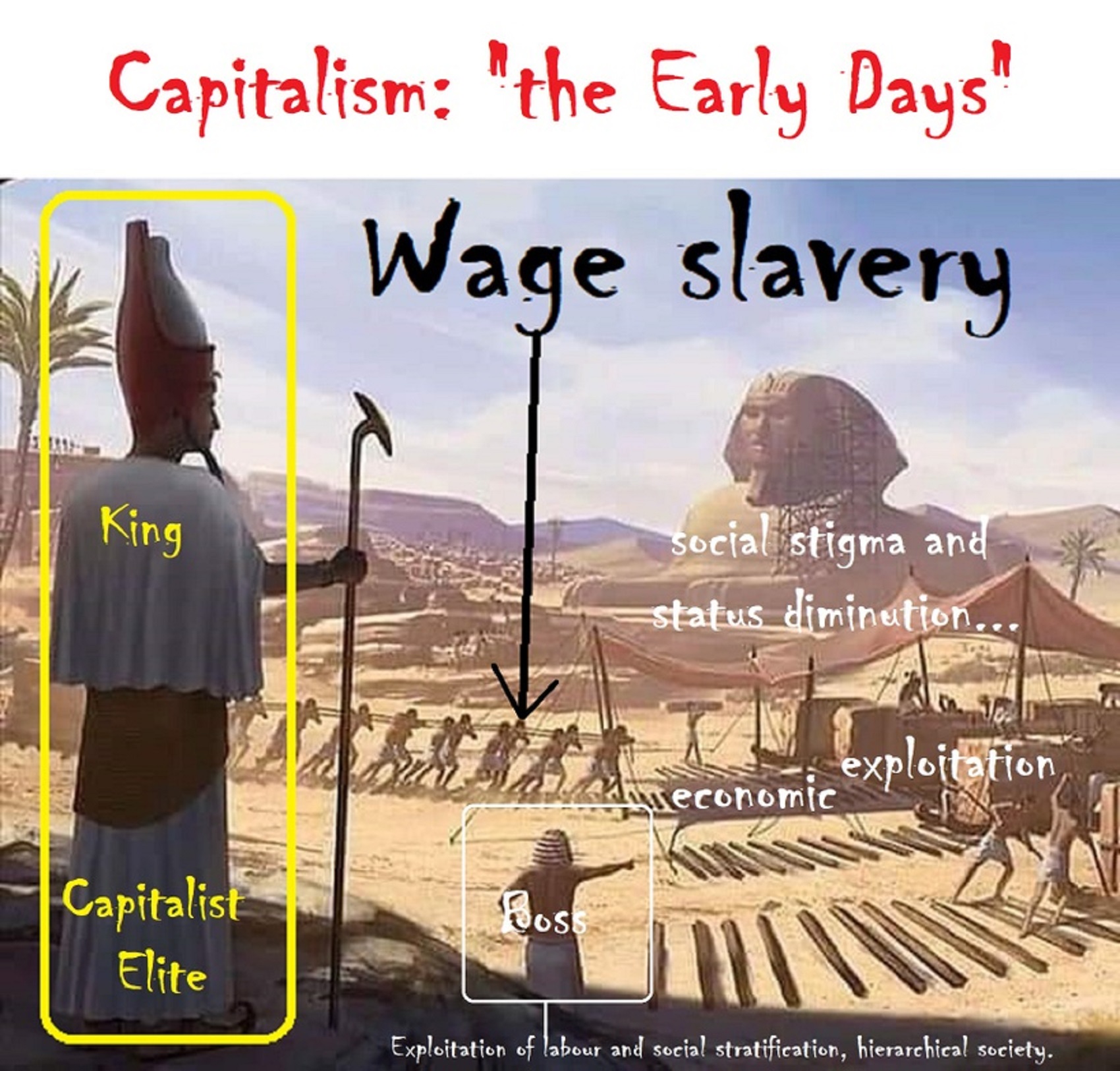


Wage Slavery
“Wage slavery is a term used to describe a situation where a person’s livelihood depends on wages or a salary, especially when the wages are low and the person has few realistic chances of upward mobility.” ref
“The term is sometimes used to criticize exploitation of labor and social stratification, with the former seen primarily as unequal bargaining power between labor and capital (particularly when workers are paid comparatively low wages, e.g. in sweatshops) and the latter as a lack of workers’ self-management, fulfilling job choices and leisure in an economy.” ref
“The criticism of social stratification covers a wider range of employment choices bound by the pressures of a hierarchical society to perform otherwise unfulfilling work that deprives humans of their “species character” not only under threat of starvation or poverty, but also of social stigma and status diminution. Historically, some socialist organizations and activists have espoused workers’ self-management or worker cooperatives as possible alternatives to wage labor.” ref
“Similarities between wage labor and slavery were noted as early as Cicero in Ancient Rome, such as in De Officiis. With the advent of the Industrial Revolution, thinkers such as Pierre-Joseph Proudhon and Karl Marx elaborated the comparison between wage labor and slavery, while Luddites emphasized the dehumanization brought about by machines. The introduction of wage labor in 18th-century Britain was met with resistance, giving rise to the principles of syndicalism and anarchism.” ref
“Before the American Civil War, Southern defenders of African American slavery invoked the concept of wage slavery to favorably compare the condition of their slaves to workers in the North. The United States abolished most forms of slavery after the Civil War, but labor union activists found the metaphor useful – according to historian Lawrence Glickman, in the Gilded Age “[r]eferences abounded in the labor press, and it is hard to find a speech by a labor leader without the phrase.” ref
The First Labor Strike in History?
“THE PROBLEM WAS THREE-FOLD: A LOSS OF LABOR FROM CASUALTIES IN WAR & THE EXPENSE IN REPELLING THE SEA PEOPLES, CORRUPT OFFICIALS, & POOR HARVESTS. OFFICIALS ORDERED PASTRIES DELIVERED TO THE STRIKING WORKERS & HOPED THEY WOULD BE SATISFIED & GO HOME.” ref
“For over 20 years Ramesses III had done his best for the people and, as he approached his 30th year, plans were set in motion for a grand jubilee festival to honor him. Egyptologist Toby Wilkinson notes:
The court now looked forward to the king’s thirty-year jubilee, determined to stage a celebration worthy of so glorious a monarch. There would be no stinting, no corners cut. Only the most lavish ceremonies would do. It was a fateful decision. Beneath the pomp and circumstance, the Egyptian state had been seriously weakened by its exertions. The military losses of 1178 were still keenly felt. Foreign trade with the Near East had never fully recovered from the Sea People‘s orgy of destruction. The temples’ coffers might be full of copper and myrrh, but their supplies of grain – the staple of the Egyptian economy – were gravely depleted. Against such a background, the jubilee preparations would prove a serious drain on resources. (334)” ref
“The troubles began in 1159 BCE, three years before the festival, when the monthly wages of the tomb-builders and artisans at Set-Ma’at (“The Place of Truth”, better known as Deir el-Medina) arrived almost a month late. The scribe Amennakht, who also seems to have served as a kind of shop steward, negotiated with local officials for the distribution of grain to the workers but this was only a temporary solution to an immediate problem; the underlying cause of the failure in payment was never addressed.” ref
“Instead of looking into what had gone wrong and trying to prevent it from happening again, officials dedicated themselves to preparation for the grand festival. The payment to the workers at Deir el-Medina was again late and then again late until, as Wilkinson writes, “the system of paying the necropolis workers broke down altogether, prompting the earliest recorded strikes in history” (335). The workers had waited for 18 days beyond their payday and refused to wait any longer. They lay down their tools and marched toward the city shouting “We are hungry!” They first demonstrated at Ramesses III’s mortuary temple and then staged a sit-in near the temple of Thutmose III.” ref
“The local officials had no idea how to deal with the situation; nothing like this had ever happened in the history of the country. Ma’at applied to everyone, from the king to the peasant, and everyone was expected to recognize his or her place in the scheme of the universe and act accordingly. Workers rising up and demanding their pay was quite simply an impossibility because it violated the principle of ma’at. With no understanding of how to deal with the problem, officials ordered pastries delivered to the striking workers and hoped they would be satisfied and go home.” ref
“The pastries were not enough, however, and the next day the men took over the southern gate of the Ramesseum, the central storehouse of grain in Thebes. Some broke into the inner rooms demanding their pay and the temple officials called the chief of police, a man named Montumes. Montumes told the strikers to leave the temple and return to their work but they refused. Helpless, Montumes withdrew and left the problem for the officials to resolve. The back pay was finally handed over after negotiations between the priest-officials and the strikers but no sooner had the men returned to their village than they discovered their next payment would not be coming.” ref
“Again the workers went on strike, this time taking over and blocking all access to the Valley of the Kings. The significance of this act was that no priests or family members of the deceased were able to enter with food and drink offerings for the dead and this was considered a serious offense to the memory of those who had passed on to the afterlife. When officials appeared with armed guards and threatened to remove the men by force, a striker responded that he would damage the royal tombs before they could move against him and so the two sides were stalemated.” ref
“By this time the men were no longer simply striking over the late payments but what they saw as a serious breach of ma’at. The king was supposed to take care of his people and that meant making sure that officials who oversaw payments did so correctly and in a timely manner. It was now going on three years since the strikes first started and the situation had not changed: the workers would not receive their pay, they would then go on strike, the officials would find the means to pay them, and the same scenario would be repeated again the next month. The tomb-workers and artisans claimed that injustice of the highest order was being perpetrated and they wanted that situation addressed.” ref
“The local government, however, still had no understanding of how to handle the problem. It was their responsibility to maintain order and, especially with the jubilee coming up, keep the peace and uphold the dignity of pharaoh. They could not send official word to the capital that the workers of Thebes refused to do their jobs or they could possibly face execution for failing to do their duty; so they did nothing. In keeping with the traditions of the culture, they should have sent word to the vizier who would then have looked into and corrected the problem. The vizier did, in fact, come to Thebes at about this time in order to collect statues for the jubilee celebration but there is no indication he was told anything about the striking workers.” ref
“The jubilee in 1156 BCE or 3,177 years ago was a great success and, as at all festivals, the participants forgot about their daily troubles with dancing and drink. The problem did not go away, however, and the workers continued their strikes and their struggle for fair payment in the following months. At last some sort of resolution seems to have been reached whereby officials were able to make payments to the workers on time but the dynamic of the relationship between temple officials and workers had changed – as had the practical application of the concept of ma’at – and these would never really revert to their former understandings again. Ma’at was the responsibility of the pharaoh to oversee and maintain, not the workers; and yet the men of Deir el-Medina had taken it upon themselves to correct what they saw as a breach in the policies which helped to maintain essential harmony and balance. The common people had been forced to assume the responsibilities of the king.” ref
Significance
“The strikes of the tomb-workers and artisans were especially influential because these men were among the highest paid and most respected in the country. If they could be treated this poorly, the reasoning went, then others should expect even worse. The influence of the strikes was also so great because these workers had the most to lose, were all very aware of the principle of ma’at and their duty to it, and yet chose to stand up against a governmental practice which they felt was unjust. What began as a complaint over late wages turned into an action protesting corruption and injustice. Toward the end of their strikes the workers were no longer chanting about their hunger but about the larger issue:
We have gone on strike not from hunger but because we have a serious accusation to make: bad things have been done in this place of Pharaoh. (Wilkinson, 337)” ref
“The success of the tomb-worker/artisan strikes inspired others to do the same. Just as the official records of the battle with the Sea Peoples never recorded the Egyptian losses in the land battle, neither do they record any mention of the strikes. The record of the strike comes from a papyrus scroll discovered at Deir el-Medina and most probably written by the scribe Amennakht. The precedent of workers walking away from their jobs was set by these events and, although there are no extant official reports of other similar events, workers now understood they had more power than previously thought. Strikes are mentioned in the latter part of the New Kingdom and Late Period and there is no doubt the practice began with the workers at Deir el-Medina in the time of Ramesses III.” ref


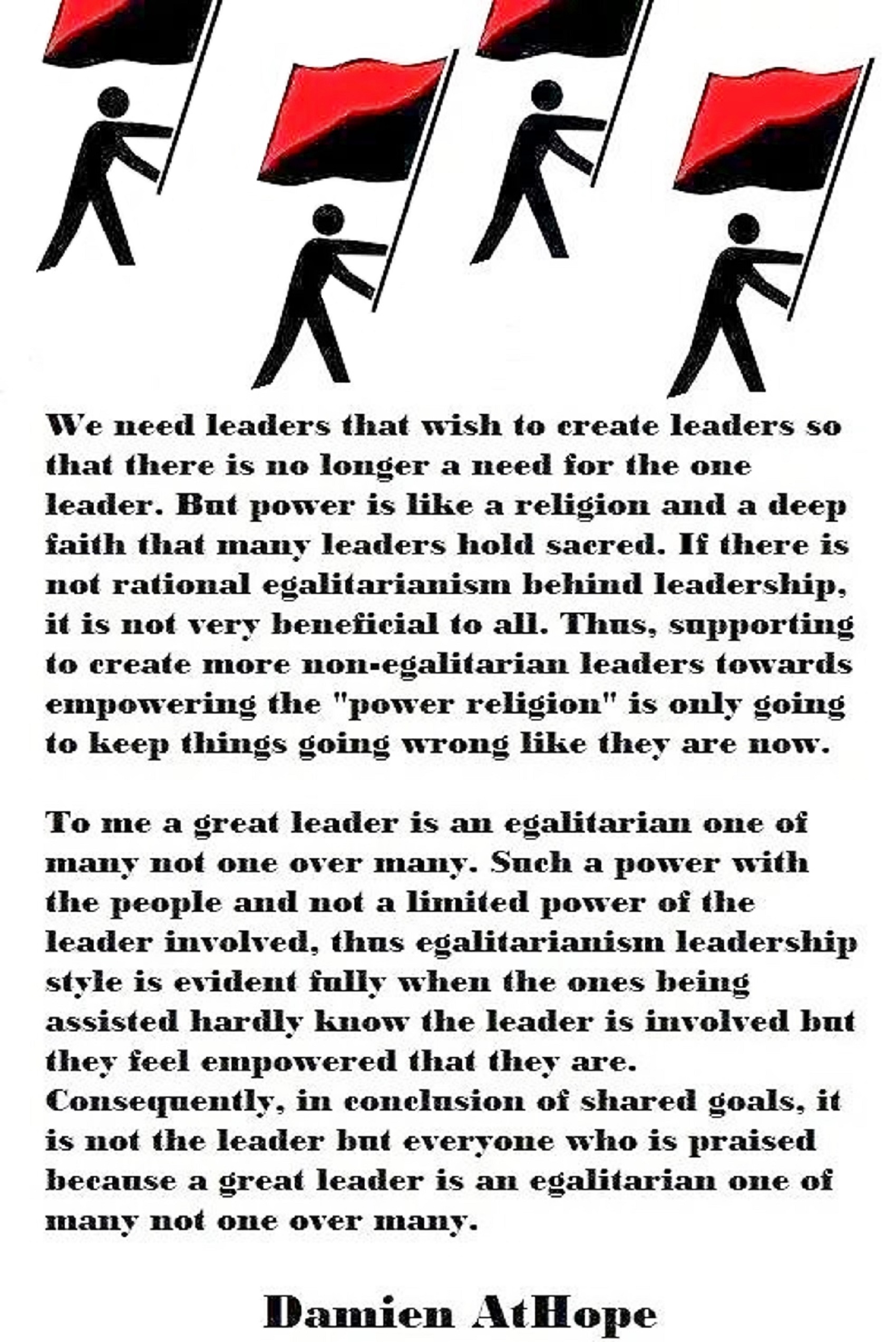

“Religion is an Evolved Product” and Yes, Religion is Like Fear Given Wings…
Atheists talk about gods and religions for the same reason doctors talk about cancer, they are looking for a cure, or a firefighter talks about fires because they burn people and they care to stop them. We atheists too often feel a need to help the victims of mental slavery, held in the bondage that is the false beliefs of gods and the conspiracy theories of reality found in religions.
Understanding Religion Evolution:
- Pre-Animism (at least 300,000 years ago)
- Animism (Africa: 100,000 years ago)
- Totemism (Europe: 50,000 years ago)
- Shamanism (Siberia: 30,000 years ago)
- Paganism (Turkey: 12,000 years ago)
- Progressed organized religion (Egypt: 5,000 years ago), (Egypt, the First Dynasty 5,150 years ago)
- CURRENT “World” RELIGIONS (after 4,000 years ago)
- Early Atheistic Doubting (at least by 2,600 years ago)
“An Archaeological/Anthropological Understanding of Religion Evolution”
It seems ancient peoples had to survived amazing threats in a “dangerous universe (by superstition perceived as good and evil),” and human “immorality or imperfection of the soul” which was thought to affect the still living, leading to ancestor worship. This ancestor worship presumably led to the belief in supernatural beings, and then some of these were turned into the belief in gods. This feeble myth called gods were just a human conceived “made from nothing into something over and over, changing, again and again, taking on more as they evolve, all the while they are thought to be special,” but it is just supernatural animistic spirit-belief perceived as sacred.
Quick Evolution of Religion?
Pre-Animism (at least 300,000 years ago). So, it all starts in a general way with Animism (such as that seen in Africa: 100,000 years ago) (theoretical belief in supernatural powers/spirits), then this is physically expressed in or with Totemism (Europe: 50,000 years ago) (theoretical belief in mythical relationship with powers/spirits through a totem item), which then enlists a full-time specific person to do this worship and believed interacting Shamanism (beginning around 30,000 years ago in Siberia) (theoretical belief in access and influence with spirits through ritual), and then there is the further employment of myths and gods added to all the above giving you Paganism (beginning around 12,000 years ago in Turkey) (often a lot more nature-based than most current top world religions, thus hinting to their close link to more ancient religious thinking it stems from). My hypothesis is expressed with an explanation of the building of a theatrical house (modern religions development). Progressed organized religion (around 5,000 years ago as sen in Egypt) with CURRENT “World” RELIGIONS (after 4,000 years ago).
Historically, in large city-state societies (such as Egypt or Iraq) starting around 5,000 years ago culminated to make religion something kind of new, a sociocultural-governmental-religious monarchy, where all or at least many of the people of such large city-state societies seem familiar with and committed to the existence of “religion” as the integrated life identity package of control dynamics with a fixed closed magical doctrine, but this juggernaut integrated religion identity package of Dogmatic-Propaganda certainly did not exist or if developed to an extent it was highly limited in most smaller prehistoric societies as they seem to lack most of the strong control dynamics with a fixed closed magical doctrine (magical beliefs could be at times be added or removed). Many people just want to see developed religious dynamics everywhere even if it is not. Instead, all that is found is largely fragments until the domestication of religion.
Religions, as we think of them today, are a new fad, even if they go back to around 6,000 years in the timeline of human existence, this amounts to almost nothing when seen in the long slow evolution of religion at least around 70,000 years ago with one of the oldest ritual worship. Stone Snake of South Africa: “first human worship” 70,000 years ago. This message of how religion and gods among them are clearly a man-made thing that was developed slowly as it was invented and then implemented peace by peace discrediting them all. Which seems to be a simple point some are just not grasping how devastating to any claims of truth when we can see the lie clearly in the archeological sites.
I wish people fought as hard for the actual values as they fight for the group/clan names political or otherwise they think support values. Every amount spent on war is theft to children in need of food or the homeless kept from shelter.
-
Here are several of my blog posts on history:
- To Find Truth You Must First Look
- Archaeology Knowledge Challenge?
- Beware of Pseudo-History like the Claims of a Hammer in a 400 Million-Year-Old Rock
- The Evolution of Fire Sacralizing and/or Worship 1.5 million to 300,000 years ago and beyond?
- Proto Religion: Superstition around 1 million years ago, to Pre-Animism 300,000 years ago, & then Animism Religion 100,000 years ago
- Stone Age Art: 500,000 – 233,000 Years Old
- Around 500,000 – 233,000 years ago, Oldest Anthropomorphic art (Pre-animism) is Related to Female
- 400,000 Years Old Sociocultural Evolution
- Burial-pits, Cave-tombs, and/or Shallow-graves begin with Homo
- The Emergence of Pre-Religion 300,000 years ago, with Pre-Animism?
- Pre-Animism: Portable Rock Art at least 300,000-year-old
- Pre-animism 300,000 years old and animism 100,000 years old: related to “Anarchism and Socialism”
- Homo Naledi and an Intentional Cemetery “Pre-Animism” dating to around 250,000 years ago?
- Neanderthals “Primal Religion (Pre-Animism/Animism?)” Mystery Cave Rings 175,000 Years Ago
- 130,000 years ago – Earliest evidence for burial and it’s Neanderthals…
- Did Neanderthals teach us “Primal Religion (Pre-Animism/Animism?)” 120,000 Years Ago?
- What about Neanderthals and Religion?
- Animism: an approximately 100,000-year-old belief system?
- Animism: a belief among some indigenous people, young children, or all religious people!
- The Origin of Language: Starts in Symbolism Around 100,000 years ago, to Early Proto-Writing 44,000-5,000 years ago with Unrealized Connections
- Rock crystal stone tools 75,000 Years Ago – (Spain) made by Neanderthals
- Prehistoric Child Burials Begin at Least Around 78,000 Years Ago
- Stone Snake of South Africa: “first human worship” 70,000 years ago
- Similarities and differences in Animism and Totemism
- Did Neanderthals Help Inspire Totemism? Because there is Art Dating to Around 65,000 Years Ago in Spain?
- History of Drug Use with Religion or Sacred Rituals possibly 58,000 years ago?
- Totemism: an approximately 50,000-year-old belief system?
- Totemism 50,000 years old: related to “Anarchism and Socialism”
- Australia & Aboriginal Religion at least around 50,000 years old
- Modern Humans start around 50,000 years ago Helped by Feminisation
- Out of Africa: “the evolution of religion seems tied to the movement of people”
- Totemism and Shamanism Dispersal Theory Expressed around 50,000 to 30,000 years ago
- Back-migrations to Africa, Starting with Eurasia to North Africa around 45,000 years ago
- Possible Religion Motivations in the First Cave Art at around 43,000 years ago?
- 43,000-33,000 years old Aurignacian Figurine Marks, like at the Swabian Jura caves in Germany
- 41,000-20,000-year-old Upper Paleolithic Tally sticks
- 40,000 years old Aurignacian Lion Figurine Early Totemism?
- 40,000-35,000 years ago “first seeming use of a Totem” ancestor, animal, and possible pre-goddess worship?
- Prehistoric Egypt 40,000 years ago to The First Dynasty 5,150 years ago
- 38,000 Years Old Engraving of an Aurochs with Seeming Totemism Expression?
- Aurignacian Period female ‘Venus’ carvings start at 35,000 years ago, then Transfer on to Other Cultures?
- Sacred Bulls, the Moon, and Fertility begins at least around 35,000 years ago?
- Women were the focus of religion, from at least around 35,000 years ago, until 2,000 years ago?
- Stars: Ancestors, Spirit Animals, and Deities (around 6,000 years ago, with connections to shamanism at 30,000 years ago and possibly further back to 40,000 years ago with totemism)
- Sacred Bulls, the Moon, and Fertility begins at least around 35,000 years ago?
- 34,000 years ago Lunar Calendar Cave art around the Time Shift From Totemism to Early Shamanism
- 34,000 years old Russan “Sungir” Early Totemistic-Shamanism
- 31,000-25,000 years old Dolni Vestonice, Czech Republic Totemistic-Shamanism
- Shamanism: an approximately 30,000-year-old belief system
- Could the Phallus Phenomena (A Bull Horn) and the Shamanism Phenomena beginning around 30,000 years ago
- Lenticular Cloud Formations may connect to Ancient “House of Gods” Mythology
- “Sky Burial” and its possible origins at least 12,000 years ago to likely 30,000 years ago or older.
- The Peopling of the Americas Pre-Paleoindians/Paleoamericans around 30,000 to 12,000 years ago
- Hunter-Gatherer/Indigenous Peoples Religiosity, Beliefs, and Practices
- Starting 30,000 Years Ago is the Sitting Venus Phenomena
- Shamanism 30,000 years old: related to “Anarchism and Socialism”
- Trinity Evolution Started over 30,000 years ago, Maybe?
- Paleolithic Totem Venuses become the later Goddesses of the Neolithic and beyond?
- The “Inner Asian Mountain Corridor” as well as the “Eurasian Steppe Corridor” and Repetitious Migrations
- Who were the Groups migrating and merging with the previous Groups of Europe?
- 27,000 to 25,000 Years ago Oldest Shaman was Female, Buried with the Oldest Portrait Carving
- Could a Gravettian carving around 25,000 years old relate to Later Goddess and the Bull cults like Catal Huyuk
- Gravettian burial of Caviglione Woman, (shaman?) dated to around 24,000 years ago
- The Gravettian culture (Europe) shared ritual ideas and The Ancient North Eurasian culture (Asia) 24,000 years ago
- 24,000 Years Old Sacred Burial of a Siberian Mal’ta Boy
- Groups partially derived from the Ancient North Eurasians
- Leda and the Swan: possibly relates back to 24,000–15,000 years old Mal’ta–Buret’ culture, Lake Baikal, Siberia?
- Similarities in Shamanism?
- Black, White, and Yellow Shamanism?
- Shamanistic rock art from central Aboriginal Siberians and Aboriginal drums in the Americas
- Horned female shamans and Pre-satanism Devil/horned-god Worship?
- Epipalaeolithic Near East 20,000 to 9,000 years ago and the Emergence of Advanced Culture as well as New Religion?
- Sifting through the relation of Bird spirits/deities of the sky (20,000 to 5,000 years ago)
- (Magdalenian/Iberomaurusian) Connections to the First Paganists of the early Neolithic Near East Dating from around 17,000 to 12,000 Years Ago
- 16,000 to 12,000 years ago Magdalenian Sacred Ritual and Symbols
- Are the Natufians of Israel around 15,000 to 11,500 years ago who you thought they were?
- Possible Clan Leader/Special “MALE” Ancestor Totem Poles At Least 13,500 years ago?
- Jewish People with DNA at least 13,200 years old, Judaism, and the Origins of Some of its Ideas
- Genetic studies on Jewish DNA is not 6,000 years old but has origin links to about 20,000 to 30,000 years ago?
- 13,100 – 12,150 years old Pre/early-Paleo-Indian Prehistoric site in Pennsylvania
- Baltic Reindeer Hunters: Swiderian, Lyngby, Ahrensburgian, and Krasnosillya cultures 12,020 to 11,020 years ago are evidence of powerful migratory waves during the last 13,000 years and a genetic link to Saami and the Finno-Ugric peoples.
- My Reasoned Speculations on the Early Migrations of Paganism 13,000 to 3,000 years ago, Cultural Transfer
- 13,000-12,000 years ago Culture Leading to New Oppression changed everything and it was not always this way.
- The Rise of Inequality: patriarchy and state hierarchy inequality
- Fertile Crescent 12,500 – 9,500 Years Ago: fertility and death cult belief system?
- 12,400 – 11,700 Years Ago – Kortik Tepe (Turkey) Pre/early-Agriculture Cultic Ritualism
- Paganism: spread of Haplogroup J and its Seeming connection of Bull Worship
- Pre-Pottery Neolithic (10000 – 6500 BCE) and Pottery Neolithic (7000–5000 BCE)
- 12,000-year-old Gobekli Tepe: “first human-made pagan temple”
- Gobekli Tepe is more like Shamanistic early Paganism, Not Adam, Eve, and Cain or Bible anything!
- Ritualistic Bird Symbolism at Gobekli Tepe and its “Ancestor Cult”
- Male-Homosexual (female-like) / Trans-woman (female) Seated Figurine from Gobekli Tepe
- Could a 12,000-year-old Bull Geoglyph at Göbekli Tepe relate to older Bull and Female Art 25,000 years ago and Later Goddess and the Bull cults like Catal Huyuk?
- Sedentism and the Creation of goddesses around 12,000 years ago as well as male gods after 7,000 years ago.
- Alcohol, where Agriculture and Religion Become one? Such as Gobekli Tepe’s Ritualistic use of Grain as Food and Ritual Drink
- Epigravettians Join the Religious Partying at Gobekli Tepe?
- Neolithic Ritual Sites with T-Pillars and other Cultic Pillars
- Paganism: Goddesses around 12,000 years ago then Male Gods after 7,000 years ago
- First Patriarchy: Split of Women’s Status around 12,000 years ago & First Hierarchy: fall of Women’s Status around 5,000 years ago.
- Natufians: an Ancient People at the Origins of Agriculture and Sedentary Life
- J DNA and the Spread of Agricultural Religion (paganism)
- Paganism: an approximately 12,000-year-old belief system
- Paganism 12,000 years old: related to “Anarchism and Socialism” (Pre-Capitalism)
- Shaman burial in Israel 12,000 years ago and the Shamanism Phenomena
- Need to Mythicized: gods and goddesses
- 12,000 – 7,000 Years Ago – Paleo-Indian Culture (The Americas)
- Ancient Egypt: Epipaleolithic, Neolithic, and Predynastic from 12,000 to 5,000 years ago
- 12,000 – 2,000 Years Ago – Indigenous-Scandinavians (Nordic)
- Norse did not wear helmets with horns?
- Pre-Pottery Neolithic Skull Cult around 11,500 to 8,400 Years Ago?
- Masked Head Hunters of “Karahan Tepe” 11,400-year-old monumental site from the Pre-Pottery Neolithic A to B
- 10,400 – 10,100 Years Ago, in Turkey the Nevail Cori Religious Settlement
- Evolution of human skin color, white-skin is really under 10,000 years old?
- Indo-European language Trees fit an Agricultural expansion from Anatolia beginning 8,000 – 9,500 years ago
- 9,000-6,500 Years Old Submerged Pre-Pottery/Pottery Neolithic Ritual Settlements off Israel’s Coast
- Catal Huyuk “first religious designed city” around 9,500 to 7,700 years ago (Turkey)
- Goddesses/Demigoddesses/Grandmother-Mother Ancestor Spirits from Catal Huyuk?
- Cultic Hunting at Catal Huyuk “first religious designed city”
- Special Items and Art as well as Special Elite Burials at Catal Huyuk
- New Rituals and Violence with the appearance of Pottery and People?
- Haplogroup N and its related Uralic Languages and Cultures
- Ainu people, Sámi people, Native Americans, the Ancient North Eurasians, and Paganistic-Shamanism with Totemism
- Ideas, Technology and People from Turkey, Europe, to China and Back again 9,000 to 5,000 years ago?
- First Pottery of Europe and the Related Cultures
- 9,000 years old Neolithic Artifacts Judean Desert and Hills Israel
- 9,000-7,000 years-old Sex and Death Rituals: Cult Sites in Israel, Jordan, and the Sinai
- 9,000-8500 year old Horned Female shaman Bad Dürrenberg Germany
- Neolithic Jewelry and the Spread of Farming in Europe Emerging out of West Turkey
- Ideas, Technology and People from Turkey, Europe, to China and Back again 9,000 to 5,000 years ago?
- 8,600-year-old Tortoise Shells in Neolithic graves in central China have Early Writing and Shamanism
- Swing of the Mace: the rise of Elite, Forced Authority, and Inequality begin to Emerge 8,500 years ago?
- Migrations and Changing Europeans Beginning around 8,000 Years Ago
- My “Steppe-Anatolian-Kurgan hypothesis” 8,000/7,000 years ago
- Around 8,000-year-old Shared Idea of the Mistress of Animals, “Ritual” Motif
- Pre-Columbian Red-Paint (red ochre) Maritime Archaic Culture 8,000-3,000 years ago
- 7,522-6,522 years ago Linear Pottery culture which I think relates to Arcane Capitalism’s origins
- Arcane Capitalism: Primitive socialism, Primitive capital, Private ownership, Means of production, Market capitalism, Class discrimination, and Petite bourgeoisie (smaller capitalists)
- 7,500-4,750 years old Ritualistic Cucuteni-Trypillian culture of Moldova, Romania, and Ukraine
- Roots of a changing early society 7,200-6,700 years ago Jordan and Israel
- My Thoughts on Possible Migrations of “R” DNA and Proto-Indo-European?
- “Millet” Spreading from China 7,022 years ago to Europe and related Language may have Spread with it leading to Proto-Indo-European
- Proto-Indo-European (PIE), ancestor of Indo-European languages: DNA, Society, Language, and Mythology
- The Dnieper–Donets culture and Asian varieties of Millet from China to the Black Sea region of Europe by 7,022 years ago
- The First Expression of the Male God around 7,000 years ago?
- Kurgan 6,000 years ago/dolmens 7,000 years ago: funeral, ritual, and other?
- 7,020 to 6,020-year-old Proto-Indo-European Homeland of Urheimat or proposed home of their Language and Religion
- Ancient Megaliths: Kurgan, Ziggurat, Pyramid, Menhir, Trilithon, Dolman, Kromlech, and Kromlech of Trilithons
- The Mytheme of Ancient North Eurasian Sacred-Dog belief and similar motifs are found in Indo-European, Native American, and Siberian comparative mythology
- Elite Power Accumulation: Ancient Trade, Tokens, Writing, Wealth, Merchants, and Priest-Kings
- White (light complexion skin) Bigotry and Sexism started 7,000 years ago?
- Sacred Mounds, Mountains, Kurgans, and Pyramids may hold deep connections?
- Between 7,000-5,000 Years ago, rise of unequal hierarchy elite, leading to a “birth of the State” or worship of power, strong new sexism, oppression of non-elites, and the fall of Women’s equal status
- Agriculture religion (Paganism) with farming reached Britain between about 7,000 to 6,500 or so years ago and seemingly expressed in things like Western Europe’s Long Barrows
- Paganism 7,000-5,000 years old: related to “Anarchism and Socialism” (Capitalism) (World War 0) Elite and their slaves!
- Around 7,000-year-old Shared Idea of the Divine Bird (Tutelary and/or Trickster spirit/deity), “Ritual” Motif
- Nekhbet an Ancient Egyptian Vulture Goddess and Tutelary Deity
- 6,720 to 4,920 years old Ritualistic Hongshan Culture of Inner Mongolia with 5,000-year-old Pyramid Mounds and Temples
- KING OF BEASTS: Master of Animals “Ritual” Motif, around 6,000 years old or older…
- Around 6000-year-old Shared Idea of the Solid Wheel & the Spoked Wheel-Shaped Ritual Motif
- Around 5,000-year-old Shared Idea of the “Tree of Life” Ritual Motif
- Complex rituals for elite, seen from China to Egypt around 5,000 years ago
- Around 5,000 years ago: “Birth of the State” where Religion gets Military Power and Influence
- Sacred Mounds, Mountains, Kurgans, and Pyramids may hold deep connections?
- Dolmens in Israel: A Connected Dolmen Religious Phenomenon?
- 6,500–5,800 years ago in Israel Late Chalcolithic (Copper Age) Period in the Southern Levant Seems to Express Northern Levant Migrations, Cultural and Religious Transfer
- “The Ghassulian Star,” a mysterious 6,000-year-old mural from Jordan; a Proto-Star of Ishtar, Star of Inanna or Star of Venus?
- Religious/Ritual Ideas, including goddesses and gods as well as ritual mounds or pyramids from Northeastern Asia at least 6,000 years old, seemingly filtering to Iran, Iraq, the Mediterranean, Europe, Egypt, and the Americas?
- First proto-king in the Balkans, Varna culture around 6,500 years ago?
- The Center of the World “Axis Mundi” and/or “Sacred Mountains” Mythology Could Relate to the Altai Mountains, Heart of the Steppe
- Maykop (5,720–5,020 years ago) Caucasus region Bronze Age culture-related to Copper Age farmers from the south, influenced by the Ubaid period and Leyla-Tepe culture, as well as influencing the Kura-Araxes culture
- 5-600-year-old Tomb, Mummy, and First Bearded Male Figurine in a Grave
- Kura-Araxes Cultural 5,520 to 4,470 years old DNA traces to the Canaanites, Arabs, and Jews
- Minoan/Cretan (Keftiu) Civilization and Religion around 5,520 to 3,120 years ago
- Evolution Of Science at least by 5,500 years ago
- 5,500 Years old birth of the State, the rise of Hierarchy, and the fall of Women’s status
- “Jiroft culture” 5,100 – 4,200 years ago and the History of Iran
- Progressed organized religion starts, an approximately 5,000-year-old belief system
- China’s Civilization between 5,000-3,000 years ago, was a time of war and class struggle, violent transition from free clans to a Slave or Elite society
- Stonehenge: Paganistic Burial and Astrological Ritual Complex, England (5,100-3,600 years ago)
- Origin of Logics is Naturalistic Observation at least by around 5,000 years ago.
- Ziggurats (multi-platform temples: 4,900 years old) to Pyramids (multi-platform tombs: 4,700 years old)
- Did a 4,520–4,420-year-old Volcano In Turkey Inspire the Bible God?
- Finland’s Horned Shaman and Pre-Horned-God at least 4,500 years ago?
- Creation myths: From chaos, Ex nihilo, Earth-diver, Emergence, World egg, and World parent
- Bronze Age “Ritual” connections of the Bell Beaker culture with the Corded Ware/Single Grave culture, which were related to the Yamnaya culture and Proto-Indo-European Languages/Religions
- Low Gods (Earth/ Tutelary deity), High Gods (Sky/Supreme deity), and Moralistic Gods (Deity enforcement/divine order)
- The exchange of people, ideas, and material-culture including, to me, the new god (Sky Father) and goddess (Earth Mother) religion between the Cucuteni-Trypillians and others which is then spread far and wide
- Koryaks: Indigenous People of the Russian Far East and Big Raven myths also found in Tlingit, Haida, Tsimshian, and other Indigenous People of North America
- 42 Principles Of Maat (Egyptian Goddess of the justice) around 4,400 years ago, 2000 Years Before Ten Commandments
- “Happy Easter” Well Happy Eostre/Ishter
- 4,320-3,820 years old “Shimao” (North China) site with Totemistic-Shamanistic Paganism and a Stepped Pyramid
- 4,250 to 3,400 Year old Stonehenge from Russia: Arkaim?
- 4,100-year-old beaker with medicinal & flowering plants in a grave of a woman in Scotland
- Early European Farmer ancestry, Kelif el Boroud people with the Cardial Ware culture, and the Bell Beaker culture Paganists too, spread into North Africa, then to the Canary Islands off West Africa
- Flood Accounts: Gilgamesh epic (4,100 years ago) Noah in Genesis (2,600 years ago)
- Paganism 4,000 years old: related to “Anarchism and Socialism” (First Moralistic gods, then the Origin time of Monotheism)
- When was the beginning: TIMELINE OF CURRENT RELIGIONS, which start around 4,000 years ago.
- Early Religions Thought to Express Proto-Monotheistic Systems around 4,000 years ago
- Kultepe? An archaeological site with a 4,000 years old women’s rights document.
- Single God Religions (Monotheism) = “Man-o-theism” started around 4,000 years ago with the Great Sky Spirit/God Tiān (天)?
- Confucianism’s Tiān (Shangdi god 4,000 years old): Supernaturalism, Pantheism or Theism?
- Yes, Your Male God is Ridiculous
- Mythology, a Lunar Deity is a Goddess or God of the Moon
- Sacred Land, Hills, and Mountains: Sami Mythology (Paganistic Shamanism)
- Horse Worship/Sacrifice: mythical union of Ruling Elite/Kingship and the Horse
- The Amorite/Amurru people’s God Amurru “Lord of the Steppe”, relates to the Origins of the Bible God?
- Bronze Age Exotic Trade Routes Spread Quite Far as well as Spread Religious Ideas with Them
- Sami and the Northern Indigenous Peoples Landscape, Language, and its Connection to Religion
- Prototype of Ancient Analemmatic Sundials around 3,900-3,150 years ago and a Possible Solar Connection to gods?
- Judaism is around 3,450 or 3,250 years old. (“Paleo-Hebrew” 3,000 years ago and Torah 2,500 years ago)
- The Weakening of Ancient Trade and the Strengthening of Religions around 3000 years ago?
- Are you aware that there are religions that worship women gods, explain now religion tears women down?
- Animistic, Totemistic, and Paganistic Superstition Origins of bible god and the bible’s Religion.
- Myths and Folklore: “Trickster gods and goddesses”
- Jews, Judaism, and the Origins of Some of its Ideas
- An Old Branch of Religion Still Giving Fruit: Sacred Trees
- Dating the BIBLE: naming names and telling times (written less than 3,000 years ago, provable to 2,200 years ago)
- Did a Volcano Inspire the bible god?
- Hell and Underworld mythologies starting maybe as far back as 7,000 to 5,000 years ago with the Proto-Indo-Europeans?
- Yamnaya culture or at least Proto-Indo-European Languages/Religions may actually relate back to North Asia?
- The Amorite/Amurru people’s God Amurru “Lord of the Steppe”, relates to the Origins of the Bible God?
- “Dené–Yeniseian language, Old Copper Complex, and Pre-Columbian Mound Builders?
- No “dinosaurs and humans didn’t exist together just because some think they are in the bible itself”
- Sacred Shit and Sacred Animals?
- Everyone Killed in the Bible Flood? “Nephilim” (giants)?
- Hey, Damien dude, I have a question for you regarding “the bible” Exodus.
- Archaeology Disproves the Bible
- Bible Battle, Just More, Bible Babble
- The Jericho Conquest lie?
- Canaanites and Israelites?
- Accurate Account on how did Christianity Began?
- Let’s talk about Christianity.
- So the 10 commandments isn’t anything to go by either right?
- Misinformed christian
- Debunking Jesus?
- Paulism vs Jesus
- Ok, you seem confused so let’s talk about Buddhism.
- Unacknowledged Buddhism: Gods, Savior, Demons, Rebirth, Heavens, Hells, and Terrorism
- His Foolishness The Dalai Lama
- Yin and Yang is sexist with an ORIGIN around 2,300 years ago?
- I Believe Archaeology, not Myths & Why Not, as the Religious Myths Already Violate Reason!
- Archaeological, Scientific, & Philosophic evidence shows the god myth is man-made nonsense.
- Aquatic Ape Theory/Hypothesis? As Always, Just Pseudoscience.
- Ancient Aliens Conspiracy Theorists are Pseudohistorians
- The Pseudohistoric and Pseudoscientific claims about “Bakoni Ruins” of South Africa
- Why do people think Religion is much more than supernaturalism and superstitionism?
- Religion is an Evolved Product
- Was the Value of Ancient Women Different?
- 1000 to 1100 CE, human sacrifice Cahokia Mounds a pre-Columbian Native American site
- Feminist atheists as far back as the 1800s?
- Promoting Religion as Real is Mentally Harmful to a Flourishing Humanity
- Screw All Religions and Their Toxic lies, they are all fraud
- Forget Religions’ Unfounded Myths, I Have Substantiated “Archaeology Facts.”
- Religion Dispersal throughout the World
- I Hate Religion Just as I Hate all Pseudoscience
- Exposing Scientology, Eckankar, Wicca and Other Nonsense?
- Main deity or religious belief systems
- Quit Trying to Invent Your God From the Scraps of Science.
- Archaeological, Scientific, & Philosophic evidence shows the god myth is man-made nonsense.
- Ancient Alien Conspiracy Theorists: Misunderstanding, Rhetoric, Misinformation, Fabrications, and Lies
- Misinformation, Distortion, and Pseudoscience in Talking with a Christian Creationist
- Judging the Lack of Goodness in Gods, Even the Norse God Odin
- Challenging the Belief in God-like Aliens and Gods in General
- A Challenge to Christian use of Torture Devices?
- Yes, Hinduism is a Religion
- Trump is One of the Most Reactionary Forces of Far-right Christian Extremism
- Was the Bull Head a Symbol of God? Yes!
- Primate Death Rituals
- Christian – “God and Christianity are objectively true”
- Australopithecus afarensis Death Ritual?
- You Claim Global Warming is a Hoax?
- Doubter of Science and Defamer of Atheists?
- I think that sounds like the Bible?
- History of the Antifa (“anti-fascist”) Movements
- Indianapolis Anti-Blasphemy Laws #Free Soheil Rally
- Damien, you repeat the golden rule in so many forms then you say religion is dogmatic?
- Science is a Trustable Methodology whereas Faith is not Trustable at all!
- Was I ever a believer, before I was an atheist?
- Atheists rise in reason
- Mistrust of science?
- Open to Talking About the Definition of ‘God’? But first, we address Faith.
- ‘United Monarchy’ full of splendor and power – Saul, David, and Solomon? Most likely not.
- Is there EXODUS ARCHAEOLOGY? The short answer is “no.”
- Lacking Proof of Bigfoots, Unicorns, and Gods is Just a Lack of Research?
- Religion and Politics: Faith Beliefs vs. Rational Thinking
- Hammer of Truth that lying pig RELIGION: challenged by an archaeologist
- “The Hammer of Truth” -ontology question- What do You Mean by That?
- Navigation of a bad argument: Ad Hominem vs. Attack
- Why is it Often Claimed that Gods have a Gender?
- Why are basically all monotheistic religions ones that have a male god?
- Shifting through the Claims in support of Faith
- Dear Mr. AtHope, The 20th Century is an Indictment of Secularism and a Failed Atheist Century
- An Understanding of the Worldwide Statistics and Dynamics of Terrorist Incidents and Suicide Attacks
- Intoxication and Evolution? Addressing and Assessing the “Stoned Ape” or “Drunken Monkey” Theories as Catalysts in Human Evolution
- Sacred Menstrual cloth? Inanna’s knot, Isis knot, and maybe Ma’at’s feather?
- Damien, why don’t the Hebrews accept the bible stories?
- Dealing with a Troll and Arguing Over Word Meaning
- Justified beliefs or disbeliefs worthy of Knowledge?
- Afrocentrism and African Religions
- Crecganford @crecganford offers history & stories of the people, places, gods, & culture
- Empiricism-Denier?
I am not an academic. I am a revolutionary that teaches in public, in places like social media, and in the streets. I am not a leader by some title given but from my commanding leadership style of simply to start teaching everywhere to everyone, all manner of positive education.

Art by Damien Marie AtHope
Damien Marie AtHope (Said as “At” “Hope”)/(Autodidact Polymath but not good at math):
Axiological Atheist, Anti-theist, Anti-religionist, Secular Humanist, Rationalist, Writer, Artist, Jeweler, Poet, “autodidact” Philosopher, schooled in Psychology, and “autodidact” Armchair Archaeology/Anthropology/Pre-Historian (Knowledgeable in the range of: 1 million to 5,000/4,000 years ago). I am an anarchist socialist politically. Reasons for or Types of Atheism
My Website, My Blog, My (free accesses) Patreon, My (free accesses) Patreon Blog & Short-writing or Quotes My YouTube, Twitter: @AthopeMarie, and My Email: damien.marie.athope@gmail.com


